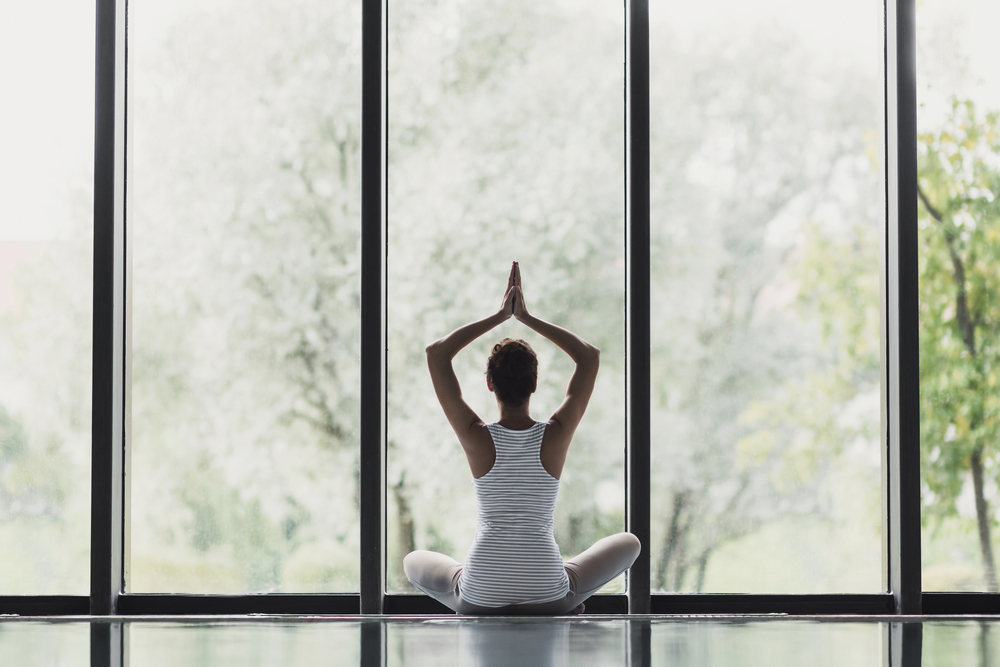DISCLAIMER: Always consult with a healthcare professional before starting new routines, programs, or nutrition plans to ensure you receive the best medical advice and strategy for your specific needs.
Embarking on a journey of self-discovery is akin to navigating through a labyrinth; it is complex, challenging, and deeply transformative.
Within this context, sanctuaries of solitude, relaxation, and transformation have blossomed, offering serene settings where guests can step away from the fast pace of life and immerse in their journey. These tranquility retreats empower visitors to unplug from external noise and tune into their inner voices.
Nestled within the spectacle of nature, these spaces present a spectrum of accommodations, ranging from the simplicity of minimalist spaces to the indulgence of luxury lodgings.
Regardless of its degree of opulence, each environment is designed to foster a sense of serenity while promoting an atmosphere for contemplation and personal transformation.
What More to Expect from a Tranquility Retreat?
 Beyond the calming ambiance of the accommodations, the retreat experience expands into delightful culinary adventures. Crafted by skilled artisans, the gastronomic adventures allow guests to indulge their palate in various flavors, blending local and international influences.
Beyond the calming ambiance of the accommodations, the retreat experience expands into delightful culinary adventures. Crafted by skilled artisans, the gastronomic adventures allow guests to indulge their palate in various flavors, blending local and international influences.
Activities extend the dining experiences, inviting guests to engage with nature and partake in adventures stimulating the mind and body. Central to these retreats are transformative journeys, carefully crafted to foster personal growth and cater to corporate getaways.
Guests have opportunities to delve into self-empowerment programs and workshops that foster mental and spiritual well-being while encouraging personal and professional development.
By collaborating with experts in diverse fields, these tranquility retreats create an environment that merges relaxation with self-discovery and bridges the gap between rejuvenation and personal evolution.
Here are a few of those places to keep in mind.
The Inn at Evins Mill, Smithville: A Sanctuary for Personal Growth and Corporate Retreats
 Nestled near the charming town of Smithville, just an hour east of Nashville, Evins Mill stands as a scenic resort with a fusion of luxury accommodations, exquisite dining experiences, plentiful activities, and transformative retreats.
Nestled near the charming town of Smithville, just an hour east of Nashville, Evins Mill stands as a scenic resort with a fusion of luxury accommodations, exquisite dining experiences, plentiful activities, and transformative retreats.
Amidst the idyllic surroundings, guests find a harmonious mix of serenity and inspiration, carving out an ideal sanctuary for personal development and transformative group retreats.
Luxury Accommodations amidst Tennessee’s Natural Splendor
Surrounded by the idyll of Tennessee’s Cumberland Plateau and Highland Rim, guests can immerse themselves in the beauty of forested bluffs and meandering streams. Within this serene backdrop, visitors have the opportunity to indulge in the resort’s luxurious accommodations, ranging from cozy individual rooms to spacious three-bedroom penthouses.
Each space blends rustic charm, understated elegance, and modern comforts, providing a peaceful oasis for relaxation. With private decks furnished with inviting rockers, guests can savor picturesque views and find solace in the beautiful surroundings.
Dining: A Gastronomic Adventure
Alongside the serene beauty and lavish accommodations, Evans Mill offers a dining experience that is truly extraordinary. A team of talented chefs, attentive waitstaff, and skilled bartenders work to curate a gastronomic journey.
From breakfast to dinner, guests can indulge in the innovative flavors of dishes like Down Under Lamb Chops, Cumberland Pork Tenderloin, and Gristmill Salmon, each blending local influences with international inspirations.
 Adventures in Nature: Exploring Trails, Falls, and Fishing
Adventures in Nature: Exploring Trails, Falls, and Fishing
Beyond culinary delights, Evins Mill pulses with a wide range of activities, catering to guests seeking adventure, relaxation, or a perfect balance of both. The resort boasts an extensive network of hiking trails that wind through the woodlands, leading to scenic overlooks and Carmac Falls.
This pristine backdrop provides ample opportunities to connect with nature, whether delighting in a refreshing swim or fishing at the Evins Mill Pond, where the thrill of reeling in bass, bluegill, and brim awaits.
Transformative Journeys: Personal Growth and Corporate Retreats
Complementing the allure of its outdoor offerings, Evins Mill goes beyond to invite guests on a journey of personal growth and professional development through its tailored programs and transformative retreats.
Recognizing the significance of collaboration and growth within organizations, Evins Mill welcomes companies searching for impactful corporate retreats. With a reputation as a sought-after destination for corporate and executive retreats, Evins Mill has cultivated strategic partnerships to enhance the retreat experience.
The resort collaborates with New Frontiers, a provider of experiential programs and a range of adventure activities. These offerings include climbing walls, archery tag, laser tag, canoeing, zip lines, paintball, and caving, creating opportunities for team building, personal growth, and unforgettable experiences.
While Evins Mill is known for enhancing businesses and organizations, it also fosters personal growth for visitors on a journey of self-development. Though it may not directly provide content for personal growth workshops, the tranquility retreat features a platform for self-empowerment programs, welcoming visitors who seek to cultivate their mental and spiritual wellbeing.
Collaborating with practitioners in various disciplines, including yoga, meditation, spiritual growth, and professional development, Evins Mill has curated an array of retreats that empower guests to embrace personal transformation.
The Art of Living Retreat Center, Boone: Serenity in Nature’s Abode

Nestled within the captivating Blue Ridge Mountains of Boone, North Carolina, the Art of Living Retreat Center is a sanctuary of relaxation and renewal.
This sought-after retreat spans over 380 acres, characterized by untouched forests, a serene landscape, and abundant wildlife. With lush greenery and tranquil trails, the retreat provides an immersive experience, offering visitors the chance to experience the tranquil rhythm of nature, fostering a sense of relaxation and serenity.
Tranquil Accommodations: Catering to Every Guest’s Needs
Seamlessly continuing the peace of the surroundings, this retreat center accommodates up to 1,100 guests, ensuring every visitor a restful and restorative stay.
To cater to the diverse preferences of guests while maintaining the theme of tranquility, the Art of Living Retreat Center offers three overnight lodging options for visitors: fully equipped apartments, retreat rooms, and traditional hotel rooms.
For those planning an extended retreat of 8 days or more, the Center provides the option of apartments for their stay. These residences come well-furnished with kitchenettes, refrigerators, stove tops, sinks, and laundry facilities for optimal convenience.
The provision of private balconies and flat-screen televisions further elevates the living experience. Capable of housing up to four guests comfortably, these dwellings serve as a welcoming and cozy home away from home for long-term visitors.
The retreat rooms serve as a perfect fit for guests seeking a minimalist setting that fosters serenity and introspection. These rooms cultivate a calm and reflective ambiance, simply furnished with two twin beds and a desk.
Equipped with customary amenities, the standard rooms come with the choice of full or king-sized beds, ensuite bathrooms, televisions, and refrigerators. These rooms ensure guests enjoy the comforts and conveniences characteristic of contemporary hospitality.
Culinary Delights: A Global Journey for the Palate
Beyond the comforts of the center’s accommodations, guests can look forward to a culinary journey under the skilled hands of Chef Raju Bhujel. At the heart of this journey that traverses global flavors, Chef Bhujel whips up dishes with the intention of instilling happiness and balance in guests.
He artfully blends the fresh bounty of Boone with diverse flavors of locales as varied as the Caribbean and Bombay, crafting vegetarian fare that is satiating and delectable.
The menu reassures non-vegetarians of an extensive range beyond the usual tofu and kale, featuring unique offerings such as coconut-roasted pepper soup, spaghetti squash primavera, and vegetable Wellington.
Additionally, all buildings have readily available filtered water, Ayurvedic teas, and fruits to cater to health and hydration needs.
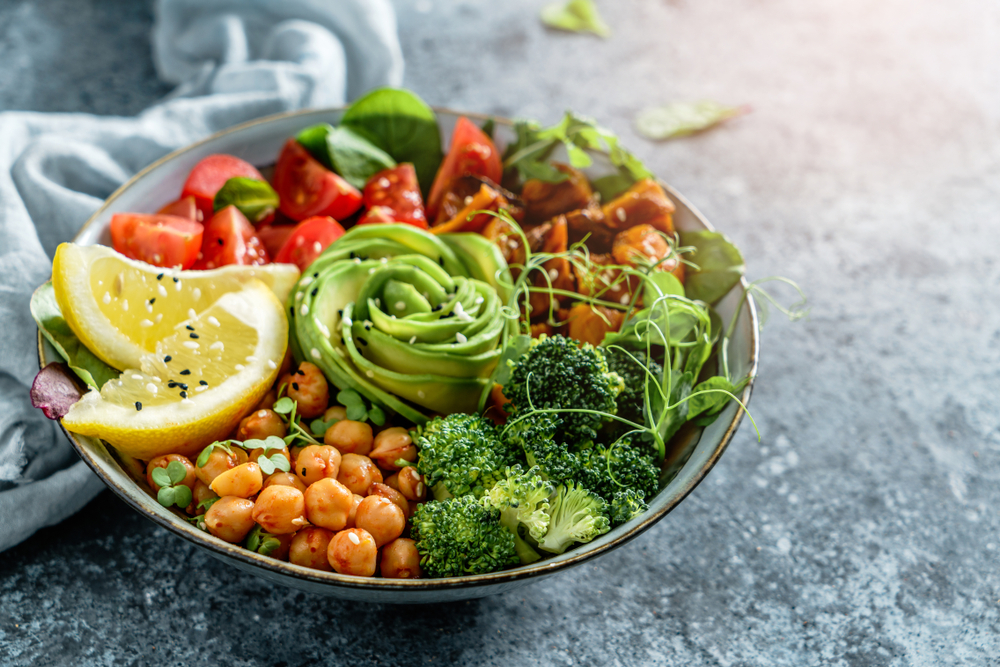 Activities and Adventures Await at the Retreat Center
Activities and Adventures Await at the Retreat Center
From the delightful dining experience, the center seamlessly invites guests to explore a diverse range of activities. A rotating calendar of options includes themed events, meditation programs, and yoga workshops, allowing visitors to immerse themselves in practices that promote well-being and self-discovery.
For those seeking ultimate relaxation and rejuvenation, the center’s top-ranked spa offers a wide array of spa, wellness, and Ayurvedic treatments and the renowned Panchakarma experience. These offerings are carefully designed to revitalize the body and mind, ensuring a holistic and transformative experience for guests.
Artistic souls will find solace in the onsite pottery studio, which offers boundless opportunities for creativity. The studio provides all the necessary materials, including clay and kiln, for guests to freely express themselves and craft unique pieces.
Beyond artistic expression, the center opens the door to a world of outdoor activities. Situated in the Blue Ridge Mountains, the place is surrounded by opportunities for adventures, including hiking, climbing, and rafting, making it ideally located for outdoor enthusiasts.
Transformative Retreats for Inner Well-being and Spiritual Awakening
In addition to a range of activities, the Art of Living Retreat Center offers a trio of transformative retreats. Built upon ancient Ayurvedic healing principles, these retreats integrate traditional wisdom with a contemporary perspective.
Available twice weekly, the Happiness Retreat is a gateway to mastering practical techniques that have the potential to positively impact visitors’ life indefinitely. Through exploring powerful practices such as Sudarshan Kriya, a well-known breathing technique, participants can experience a range of benefits, including relief from anxiety, improved immune function, and reduction in stress.
For those seeking a deeply spiritual experience, the Silent Meditation Retreat merges the core components of the Happiness Retreat with a period of silent contemplation. This unique retreat incorporates advanced breathing techniques, yoga sessions, and guided meditations, allowing participants to delve into deep introspection, nurture inner stillness, and connect with their spiritual essence.
Lastly, the Meditation Retreat presents an opportunity to learn the transformative practice of meditation. Through this retreat, participants get to uncover the simplicity and efficacy of this mind-calming technique. Meditation enhances their capabilities to foster a serene mind, boosts their immunity, and lightens any psychological or physical burdens they may carry.
The Farm, Summertown: Living with Intent
 Founded in 1971, The Farm has blossomed into a vibrant, intentional community nestled within the serene landscapes of southern middle Tennessee. Spanning across three square miles, The Farm is a testament to the values of nonviolence and deep respect for the Earth.
Founded in 1971, The Farm has blossomed into a vibrant, intentional community nestled within the serene landscapes of southern middle Tennessee. Spanning across three square miles, The Farm is a testament to the values of nonviolence and deep respect for the Earth.
Over the past four decades, The Farm has gained widespread recognition for its diverse contributions. From pioneering midwifery practices and natural childbirth to promoting vegetarian cuisine and healthy diets, the Farm has made a meaningful impact in various areas.
Sustainable Accommodations at the Farm
To fully experience the essence of The Farm and embrace its commitment to sustainable living and community harmony, visitors have the opportunity to stay in accommodations that reflect its values and ethos.
The Wooden School, which served as the first Farm High School, has been transformed into a welcoming space with two dorm rooms. These rooms feature single beds and offer a communal living environment for solo travelers and groups alike.
The Ecovillage Training Center is situated nearby and offers additional accommodation choices, including single rooms and dorm rooms with bunk beds.
For those who prefer a closer connection with nature, camping facilities are available in both a walk-in wooded area and a designated camping site where visitors can keep their vehicles nearby. These camping options allow visitors to immerse themselves in the natural beauty of The Farm while enjoying essential amenities such as water, showers, and outhouses.
From Farm to Table: Unraveling Vegan Gastronomy
After basking in the comfort of their serene accommodations, visitors wouldn’t want to miss the gastronomic adventure that awaits at the Farm.
Celebrated for their exquisite vegan creations, their “ice bean” ice cream, crafted from top-tier soy milk, has become a crowd favorite among locals and visitors. Guided by the seasoned hand of Roberta, a master chef with expertise in perfecting vegan delights, the culinary experience at The Farm has become a hallmark of its community.
Beyond food, The Farm store is a popular spot for visitors. It’s an easy one-mile walk from the Community Center, offering a variety of quick snacks and artisanal crafts. The store is a place that represents the community’s spirit, combining food and creativity for all to enjoy.
Activities: the Farm Experience Weekend
After the culinary delights at the FECC, an ideal transition is a journey offered by the Farm Experience Weekend. It is a unique opportunity for those considering a visit or even a more permanent stay at The Farm.
Participants get an in-depth look into the Farm’s fabric, history, and current infrastructure through guided tours of both the community and the Ecovillage Training Center.
Workshops during this weekend cover a wide range of topics, from alternative education models and midwifery to the intricacies of launching a small business. They also provide a platform to meet members of the community, opening channels for conversations and answers to any lingering questions.
 Educational Workshops for Sustainable Living
Educational Workshops for Sustainable Living
Over the past three decades, The Farm has established itself as a hub of experiential learning, offering a diverse portfolio of courses and workshops. From the traditional wisdom of midwifery and medicinal herbalism, participants have the opportunity to deepen their understanding of time-honored practices.
Simultaneously, the workshops offer insights into sustainable living philosophies such as natural building and permaculture to encourage an environmentally conscious way of life.
In response to evolving global needs, The Farm also educates on modern sustainability strategies. These include lessons on ecovillage design, which involves planning sustainable, socially beneficial habitats, and courses on alternative energy that aim to promote the use of renewable resources.
Workshops on carbon farming further highlight the farm’s commitment to mitigating climate change by harnessing agricultural practices that sequester carbon dioxide.
The artistry of vegan cuisine isn’t forgotten either. The Farm hosts workshops that allow participants to master the art of preparing tasty vegan dishes.
Well Being Retreat Center, Tazewell: Riverside Serenity

Tucked in the picturesque landscape of Northeast Tennessee, the Well Being Retreat Center offers a peaceful escape for wellness seekers.
This 160-acre sanctuary is framed by the calm Powell River, which shapes an environment perfect for yoga, mindfulness, meditation, and wellness retreats. With its expansive landscapes and tranquil setting, the center welcomes individuals and groups seeking an enriching retreat experience.
Accommodations: Comfort in the Heart of Nature
To provide a homely environment amidst the wilderness, the center houses a blend of three cabinettes and eleven cabins that can accommodate 15 to 25 guests. All cabins are designed with vaulted pine ceilings, tiled floors, and kitchenettes equipped with a fridge.
The Wood Duck Cabin, the largest among them all, boasts a cozy living and dining area and a full-size kitchen. Four of the cabins feature sod roofs that offer natural insulation against the heat of summer and chill of winter, often attracting deer for a peaceful rooftop grazing session.
In addition to the cabins, six picturesque tiny houses dot the upper pasture of the retreat center. These houses come with a small kitchenette, a private bath, air conditioning, and a deck offering breathtaking views of the Cumberland hills.
Dining: Nourishing the Body and Mind
Beyond the comfort of accommodation, the retreat center significantly emphasizes the power of nourishment for overall wellness, serving tasty and healthful meals.
The menu offers a customizable selection with non-vegetarian and vegetarian options aligned with retreat attendees’ dietary requirements. Each dish is freshly prepared with a focus on organic and gluten-free ingredients, including wholesome legumes, fresh vegetables and fruits, gluten-free whole grains, grass-finished beef, and ethically sourced organic eggs.
Adding to its commitment to sustainable practices, the center takes great pride in harvesting fruits and vegetables from its own organically maintained orchard and garden. They also raise their own organic chicken and collect free-range eggs. This locally sourced produce highlights the Center’s culinary ethos that revolves around a deep respect for nature.
Retreat Journeys for Holistic Transformation
In addition to providing nourishment for the body, the Wellbeing Retreat Center offers a variety of transformative retreats. Some retreats are devoted to the practice of noble silence, presenting attendees with a unique opportunity for introspection and self-discovery. These retreats are characterized by a serene atmosphere that fosters deep inner tranquility and heightened self-awareness.
The Wellbeing Retreat Center also offers tranquility retreats that, while mostly silent, include a balance of personal exploration and guided activities. A significant focus is placed on silent reflection, journaling, and rest, allowing participants to delve into introspection and deepen their inner exploration.
In addition to the silent activities, the retreat center offers guided experiences such as mindful movement, forest therapy, and sitting/walking meditation, complementing and enhancing the retreat journey.
Apart from engaging in outdoor activities, participants can join group discussions and interactive activities, providing dynamic opportunities for connection and exchange.
In the more personal sphere of the retreats, family and systemic constellations provide insights into the dynamics of relationships, shedding light on how these relational structures influence individual behaviors and emotional wellbeing.
Finally, Dharma discussions provide a space for deep listening and reflection, helping participants to relate the practices they’ve experienced during the retreat to their everyday lives.
By seamlessly blending mindful movement with the lessons and practices of the retreat, participants are encouraged to carry their newfound insights into their daily routines. This helps them cultivate a lifestyle of sustained mindfulness and wellbeing.
THOR: A Mountain Refuge in the Heart of Tennessee
 Nestled within Tennessee’s serene beauty and just an hour south of the vibrant city of Knoxville, THOR awaits – a refuge for renewal and personal transformation.
Nestled within Tennessee’s serene beauty and just an hour south of the vibrant city of Knoxville, THOR awaits – a refuge for renewal and personal transformation.
Resting on a mountain with views of the Chattahoochee-Oconee National Forests, the Great Smoky Mountains National Park, and the Nantahala National Forest, its idyllic location offers an abundance of tranquility. Nearby, the charming town of Tellico Plains teems with local businesses, lending a mountain town vibe to the surrounding region.
Crafted in harmony with the rustic environment, this retreat caters exclusively to women over forty who have triumphed over significant challenges or seek solace during an impactful phase of their lives. This nurturing space for growth and healing peacefully blends with the surrounding tranquility and rural allure.
Unwind in THOR Retreat’s Rustic-Chic Accommodations
A tranquility retreat from the demands of everyday life unfolds within its accommodations. Situated amidst untouched forest land, these lodgings blend rustic charm with contemporary elegance. Each room is thoughtfully furnished with one or two queen-size beds to provide a cozy space for friends to share and foster a sense of closeness and camaraderie.
In harmony with the natural surroundings, the décor creates an atmosphere of restful comfort so that attendees can fully immerse themselves in their wellness journey.
Farm-to-Fork: Savoring Seasonal and Sustainable Cuisine
As for the gastronomic offerings, THOR takes pride in its farm-to-table approach and local, seasonal, and sustainable menu options. The ingredients are sourced predominantly from local farms and cooperatives, emphasizing wholesome, organic products like free-range farm-raised eggs, chicken and beef, dairy, and various seasonal produce.
A glance at the lunch and dinner offerings reveals enticing options like shredded Smoked Pork Tenderloin Tacos, Garden Fresh Farm Salad, and Turkey Mushroom Meatballs with Zoodles. Dishes are buffet-style, allowing guests to portion their meals according to their macro needs. Food scales are available throughout the property for precision and convenience.
It is clear that at THOR, the cuisine is thoughtfully crafted to bolster the physical and mental wellness journey of retreat participants.
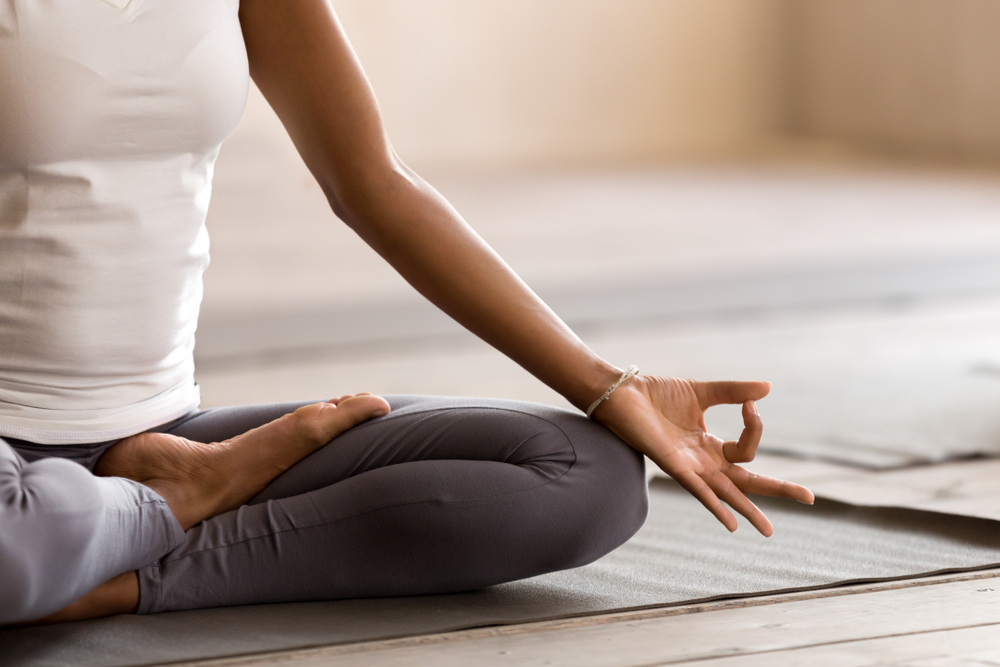 Holistic Healing and Wellness: Diverse Therapies at THOR
Holistic Healing and Wellness: Diverse Therapies at THOR
Many therapeutic treatments and activities await guests to enhance the tranquility retreat experience.
The spa services are both diverse and holistic and encompass treatments such as facials, body scrubs, massages, and other aesthetic enhancements. Delivered by adept therapists, these treatments are tailored to the guests’ needs, promising a rejuvenated and refreshed state of being upon completion.
One of the unique treatments available is IV Therapy. Under qualified healthcare professionals’ care, this treatment propels a cocktail of vital nutrients directly into the bloodstream. By circumventing the digestive system, this method delivers immediate and potent effects to foster a sense of revitalized wellness.
Reiki, an ancient healing practice, is another key feature of the wellness regimen at THOR. Known for its ability to alleviate stress, anxiety, and physical discomfort, Reiki brings forth a sense of calm, tranquility, and holistic well-being. At the retreat, skilled practitioners tailor each Reiki session to the guests’ specific needs to ensure they reap the utmost benefits.
THOR also offers the timeless wisdom of herbal medicine, a practice that harnesses the healing properties of plants and their extracts for therapeutic purposes. Here guests have the opportunity to schedule consultations with an experienced clinical herbalist. This meeting could uncover the potential of herbalism in supplementing the guests’ overall wellness journey.
Complementing these rejuvenating therapies, the retreat also offers personalized strength training sessions. The personal trainers at the facility work to grasp the guests’ individual fitness profiles, objectives, and preferences. They then guide them through a curated set of movements and exercises. The goal is to enhance stamina, foster strength, and improve overall fitness, thereby contributing to a holistic wellness experience.
Embracing Transformation: THOR’s Art + Science Retreat Experience
Beyond a diverse assortment of treatments and activities, one of the highlight offerings from THOR is The Art + Science of Transformation Retreat. This meticulously curated program invites attendees to delve deep into an exploration of wellness, personal growth, and communion with nature.
The retreat unfolds daily with a farm-to-table gourmet breakfast served at the serene Main House. This nourishing start sets the tone for the day, echoing the retreat’s ethos of harnessing what is wholesome and natural for nourishment and invigoration.
The morning tranquility extends onto the Deck, where forest bathing is combined with meditation, yoga, and restorative breathwork. This gathering allows attendees to start the day grounded in mindfulness.
As the morning progresses, the energy shifts to a more dynamic level with an outdoor HIIT class on the Deck. This invigorating session is designed to boost heart rates and energy and set a strong, vibrant tone for the day.
Once morning activities have concluded, attendees reconvene for a Mindset, Macros & Transformation Mastermind Session, which stimulates both mind and spirit. Then they are offered some free time and an opportunity to indulge in a massage, take a leisurely walk, or perhaps get to know fellow participants over a cup of coffee.
As the day transitions into the evening, the retreat shifts its dynamics to embrace a rhythm of festivity. Each event features its own one-of-a-kind concept, from high-energy dance parties to thematic dinners. The evenings are infused with vibrancy and offer fun-filled entertainment, underscoring the retreat’s commitment to balance joy and social connectivity.
To close off this transformative journey, a final free time segment offers attendees the chance to engage in favored activities, reflect on the experiences of the past days, and bid their fond farewells.
Summing up

Interweaving elements of relaxation, reflection, and adventure in a naturally serene environment, the transformational journey facilitated by retreats presents a holistic approach to personal growth.
Guests are encouraged to immerse themselves in many experiences designed to enrich their stay and promote self-development. The blend of serene accommodations and gourmet dining provides a sanctuary of comfort while activities and workshops stimulate mind and body.
With an array of activities such as wellness workshops, yoga and meditation, and outdoor adventures, the breadth of offerings ensures there’s something for every taste and inclination. These curated activities not only complement the overall tranquility retreat experience but provide an opportunity for guests to embark on a holistic journey.
Diving deeper, the core essence of retreats lies in their ability to serve as platforms for self-discovery and personal growth. They inspire guests to reflect, unwind, and embark on a journey of self-empowerment, all against the backdrop of nature’s healing power.
In their essence, tranquility retreats provide a gateway to personal evolution and growth, encouraging guests to define their own journey towards increased self-understanding and peace.



 As your liver prioritizes processing alcohol and removing it from your body, it is temporarily unable to break down carbohydrates and fats. This leads to a decrease in the number of calories your body burns, causing a reduction in your metabolic rate.
As your liver prioritizes processing alcohol and removing it from your body, it is temporarily unable to break down carbohydrates and fats. This leads to a decrease in the number of calories your body burns, causing a reduction in your metabolic rate. Alcohol slows down metabolism and can lead to cravings for unhealthy foods. You know those times when you swear you’re only going to have a beer or two and end up eating an entire pizza?
Alcohol slows down metabolism and can lead to cravings for unhealthy foods. You know those times when you swear you’re only going to have a beer or two and end up eating an entire pizza?  Alcohol is known to impair decision-making and reduce inhibitions, making it more likely to give in to unhealthy food choices. When you consume alcohol, it affects the prefrontal cortex of your brain, which is responsible for self-control and decision-making. This can cause a decrease in your ability to make sound decisions, leading to unwholesome food selections.
Alcohol is known to impair decision-making and reduce inhibitions, making it more likely to give in to unhealthy food choices. When you consume alcohol, it affects the prefrontal cortex of your brain, which is responsible for self-control and decision-making. This can cause a decrease in your ability to make sound decisions, leading to unwholesome food selections.  Alcohol can disrupt your sleep by interfering with your body’s ability to regulate metabolism and hunger. When you are sleep-deprived, your body produces less leptin and more ghrelin, the two hormones that regulate satiety and hunger.
Alcohol can disrupt your sleep by interfering with your body’s ability to regulate metabolism and hunger. When you are sleep-deprived, your body produces less leptin and more ghrelin, the two hormones that regulate satiety and hunger. The liver is like the superhero of your body. It is always working hard, eliminating toxins, and helping to keep your body on an even keel. When you happen to drink more than usual, however, you are causing a bit of chaos there. Your liver has to work overtime to metabolize alcohol, which is essentially a toxin.
The liver is like the superhero of your body. It is always working hard, eliminating toxins, and helping to keep your body on an even keel. When you happen to drink more than usual, however, you are causing a bit of chaos there. Your liver has to work overtime to metabolize alcohol, which is essentially a toxin.  Alcohol
Alcohol Alcohol can impact your energy levels and recovery, making it harder to stick to your exercise routine. Alcohol may initially give you a quick pick-me-up or a feeling of calm, but those sensations dissipate before long. What comes next is often a wave of tiredness and lethargy. This happens because alcohol acts as a depressant, leading to a slowdown in bodily responses and brain activity.
Alcohol can impact your energy levels and recovery, making it harder to stick to your exercise routine. Alcohol may initially give you a quick pick-me-up or a feeling of calm, but those sensations dissipate before long. What comes next is often a wave of tiredness and lethargy. This happens because alcohol acts as a depressant, leading to a slowdown in bodily responses and brain activity. When you’ve just finished an intense workout, your muscles have put in the work and are ready for repair and recovery. It’s like your muscles are hosting a mini restoration bash where the VIPs include protein and a good night’s sleep.
When you’ve just finished an intense workout, your muscles have put in the work and are ready for repair and recovery. It’s like your muscles are hosting a mini restoration bash where the VIPs include protein and a good night’s sleep. 
 Drinking alcohol can increase cortisol levels, which may have a role in weight gain. Known as the stress hormone, cortisol is produced in response to various stressors, including alcohol consumption. At elevated levels, this hormone is associated with a decline in metabolism and an increase in appetite, both of which can lead to weight gain, particularly in the abdominal area.
Drinking alcohol can increase cortisol levels, which may have a role in weight gain. Known as the stress hormone, cortisol is produced in response to various stressors, including alcohol consumption. At elevated levels, this hormone is associated with a decline in metabolism and an increase in appetite, both of which can lead to weight gain, particularly in the abdominal area. Testosterone is an essential hormone that plays a role in maintaining optimal body composition, muscle mass, and bone density. By increasing cortisol levels in the body, alcohol can reduce testosterone, ultimately resulting in a loss of muscle mass and an increase in body fat.
Testosterone is an essential hormone that plays a role in maintaining optimal body composition, muscle mass, and bone density. By increasing cortisol levels in the body, alcohol can reduce testosterone, ultimately resulting in a loss of muscle mass and an increase in body fat. Losing weight can be challenging, which is why many turn to medications that are specifically designed to aid the process. These medications block fat absorption, increase metabolism, and suppress appetite. While they can be effective, combining them with alcohol can lead to unwanted side effects.
Losing weight can be challenging, which is why many turn to medications that are specifically designed to aid the process. These medications block fat absorption, increase metabolism, and suppress appetite. While they can be effective, combining them with alcohol can lead to unwanted side effects.  Aside from alcohol consumption, many factors can cause weight gain, including age, genetics, medications, and lack of physical activity.
Aside from alcohol consumption, many factors can cause weight gain, including age, genetics, medications, and lack of physical activity. Maintaining a healthy weight is no easy feat. While eating right and staying active are obvious steps, your happy hour habits could put your weight loss goals on the rocks. From the hidden calories in your favorite beer to the late-night pizza runs after a few too many, alcohol can significantly impact your overall diet.
Maintaining a healthy weight is no easy feat. While eating right and staying active are obvious steps, your happy hour habits could put your weight loss goals on the rocks. From the hidden calories in your favorite beer to the late-night pizza runs after a few too many, alcohol can significantly impact your overall diet.
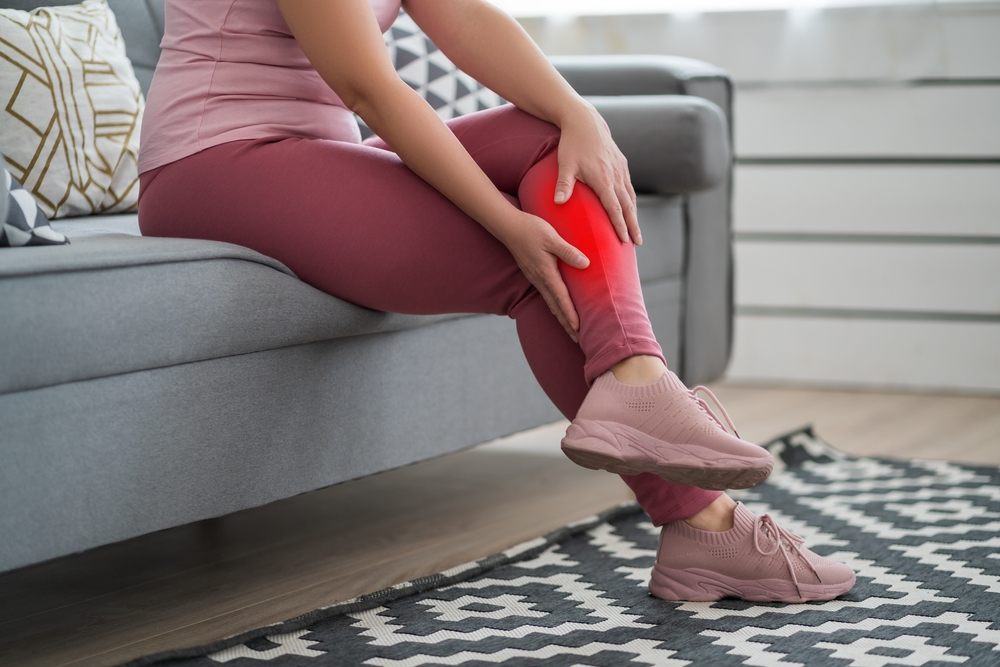 Heavy alcohol consumption can increase the risk of osteoporosis in the years preceding the onset of menopause. Excessive alcohol use during early adulthood and adolescence affects bone health, thus increasing the risk for osteoporosis.
Heavy alcohol consumption can increase the risk of osteoporosis in the years preceding the onset of menopause. Excessive alcohol use during early adulthood and adolescence affects bone health, thus increasing the risk for osteoporosis.  Whether to quit alcohol during menopause depends on several factors, such as individual health status, age, family history, medications, and risk of injury. Your health status is a major factor in determining whether to quit alcohol. Women with conditions like breast cancer, hypertension, and liver problems must avoid drinking completely.
Whether to quit alcohol during menopause depends on several factors, such as individual health status, age, family history, medications, and risk of injury. Your health status is a major factor in determining whether to quit alcohol. Women with conditions like breast cancer, hypertension, and liver problems must avoid drinking completely.  You need to first decide on a specific goal for quitting alcohol and write it down. This could be abstaining from alcohol for a certain period, like one month, three months, or one year. Alternatively, your goal could be to limit consumption to special occasions such as birthdays, holidays, and anniversaries.
You need to first decide on a specific goal for quitting alcohol and write it down. This could be abstaining from alcohol for a certain period, like one month, three months, or one year. Alternatively, your goal could be to limit consumption to special occasions such as birthdays, holidays, and anniversaries. Reach out to family or friends for support when quitting alcohol. They can offer a listening ear and encouragement or serve as accountability partners to help you stay focused and on track with your goal.
Reach out to family or friends for support when quitting alcohol. They can offer a listening ear and encouragement or serve as accountability partners to help you stay focused and on track with your goal. You must also identify effective coping strategies and mechanisms to manage stress and other triggers that might have led to drinking. They can help you to deal with difficult feelings, emotions, and situations in a healthy and constructive way, without turning to alcohol as a form of escape or relief.
You must also identify effective coping strategies and mechanisms to manage stress and other triggers that might have led to drinking. They can help you to deal with difficult feelings, emotions, and situations in a healthy and constructive way, without turning to alcohol as a form of escape or relief. Social situations can be a challenging trigger for a number of reasons. First, they may involve exposure to others who are indulging in alcohol or encouraging drinking behavior.
Social situations can be a challenging trigger for a number of reasons. First, they may involve exposure to others who are indulging in alcohol or encouraging drinking behavior. 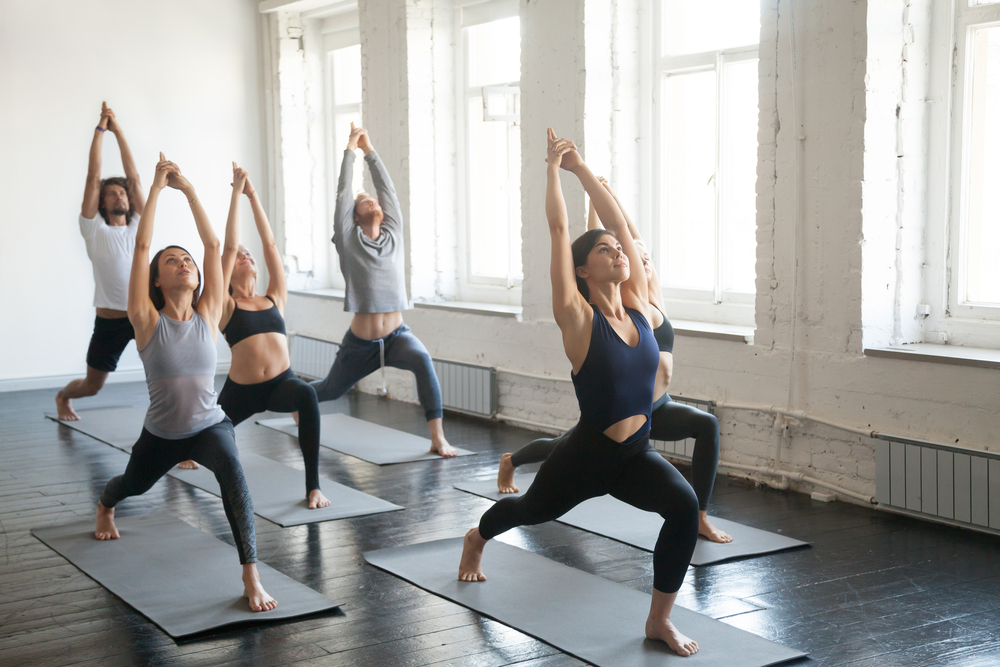 Staying busy and engaging in pastimes can be an effective strategy to maintain sobriety. This approach involves keeping yourself engaged and occupied with activities you enjoy, allowing you to avoid idleness which may lead to relapse.
Staying busy and engaging in pastimes can be an effective strategy to maintain sobriety. This approach involves keeping yourself engaged and occupied with activities you enjoy, allowing you to avoid idleness which may lead to relapse. 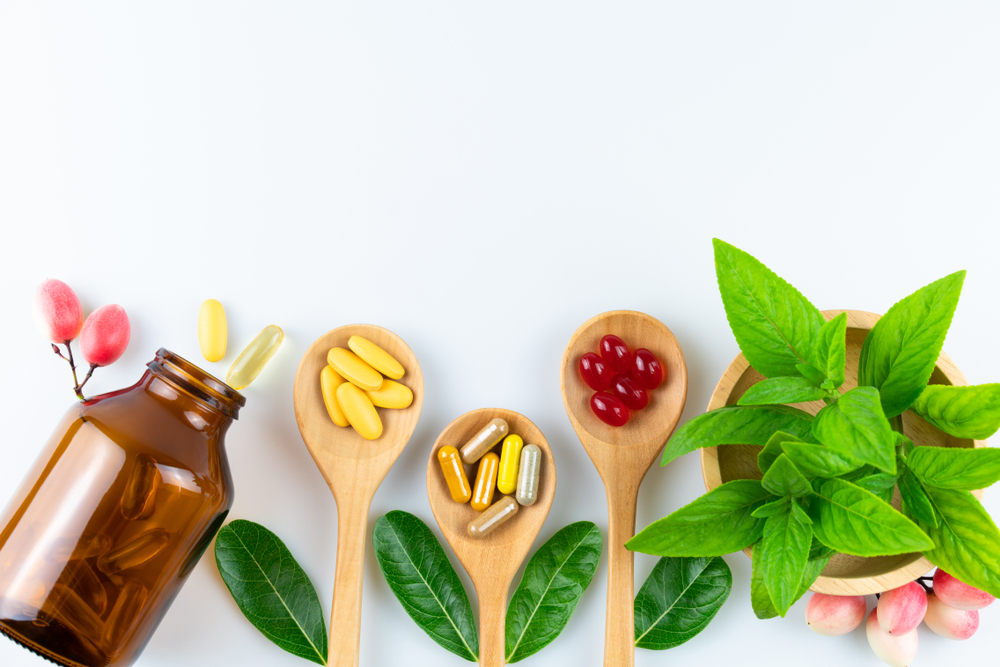 Medication can be an effective tool to reduce cravings and mitigate the discomfort that accompanies withdrawal symptoms. You must be prudent when selecting a medication, however, as some drugs aim to alleviate the manifestations of withdrawal while others help curb the urge to drink.
Medication can be an effective tool to reduce cravings and mitigate the discomfort that accompanies withdrawal symptoms. You must be prudent when selecting a medication, however, as some drugs aim to alleviate the manifestations of withdrawal while others help curb the urge to drink.  The physiological changes that occur in a woman’s body at midlife make alcohol a risky and potentially harmful choice. As women age, their bodies become less efficient at metabolizing alcohol, which means that the same amount can have a greater effect on the body than it did in earlier years. Furthermore, alcohol can exacerbate the symptoms of menopause and increase the risk of cardiovascular disease, breast cancer, and osteoporosis.
The physiological changes that occur in a woman’s body at midlife make alcohol a risky and potentially harmful choice. As women age, their bodies become less efficient at metabolizing alcohol, which means that the same amount can have a greater effect on the body than it did in earlier years. Furthermore, alcohol can exacerbate the symptoms of menopause and increase the risk of cardiovascular disease, breast cancer, and osteoporosis.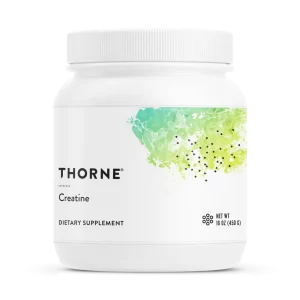

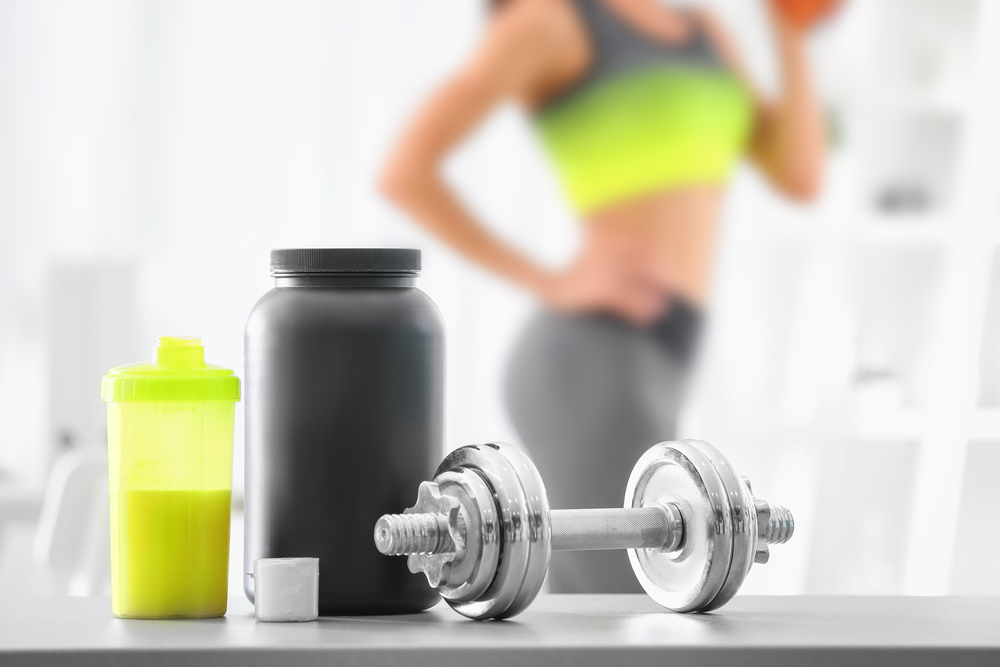 Synthesized by the pancreas, kidneys, and liver from amino acids, creatine is transported to the muscle cells and stored in the form of a high-energy molecule called phosphocreatine. This amino acid plays a role in producing adenosine triphosphate (ATP), the main energy source for muscle contraction.
Synthesized by the pancreas, kidneys, and liver from amino acids, creatine is transported to the muscle cells and stored in the form of a high-energy molecule called phosphocreatine. This amino acid plays a role in producing adenosine triphosphate (ATP), the main energy source for muscle contraction. While the bulk of research has involved male athletes, some evidence suggests that creatine could be important for women over 40.
While the bulk of research has involved male athletes, some evidence suggests that creatine could be important for women over 40. 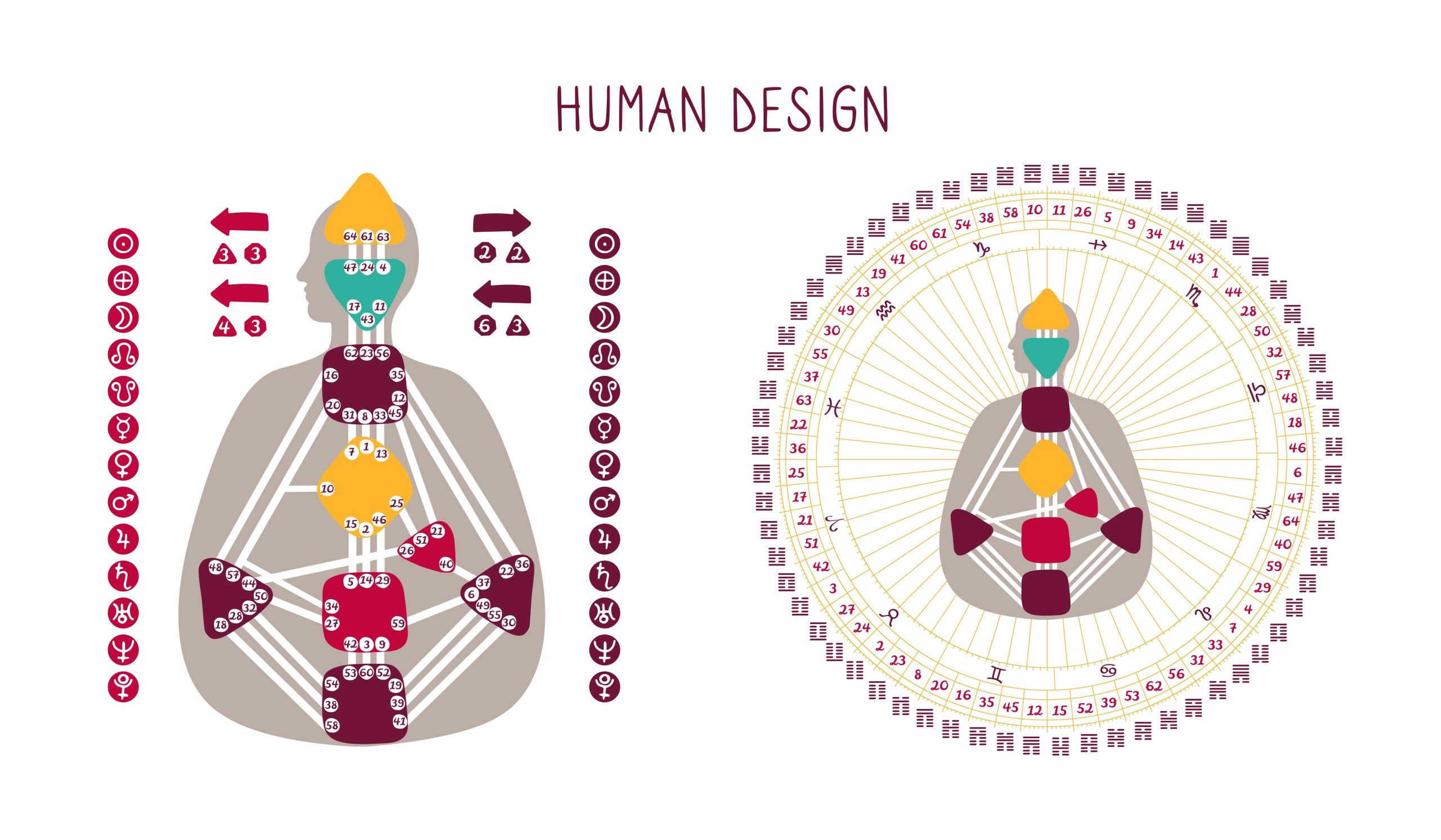
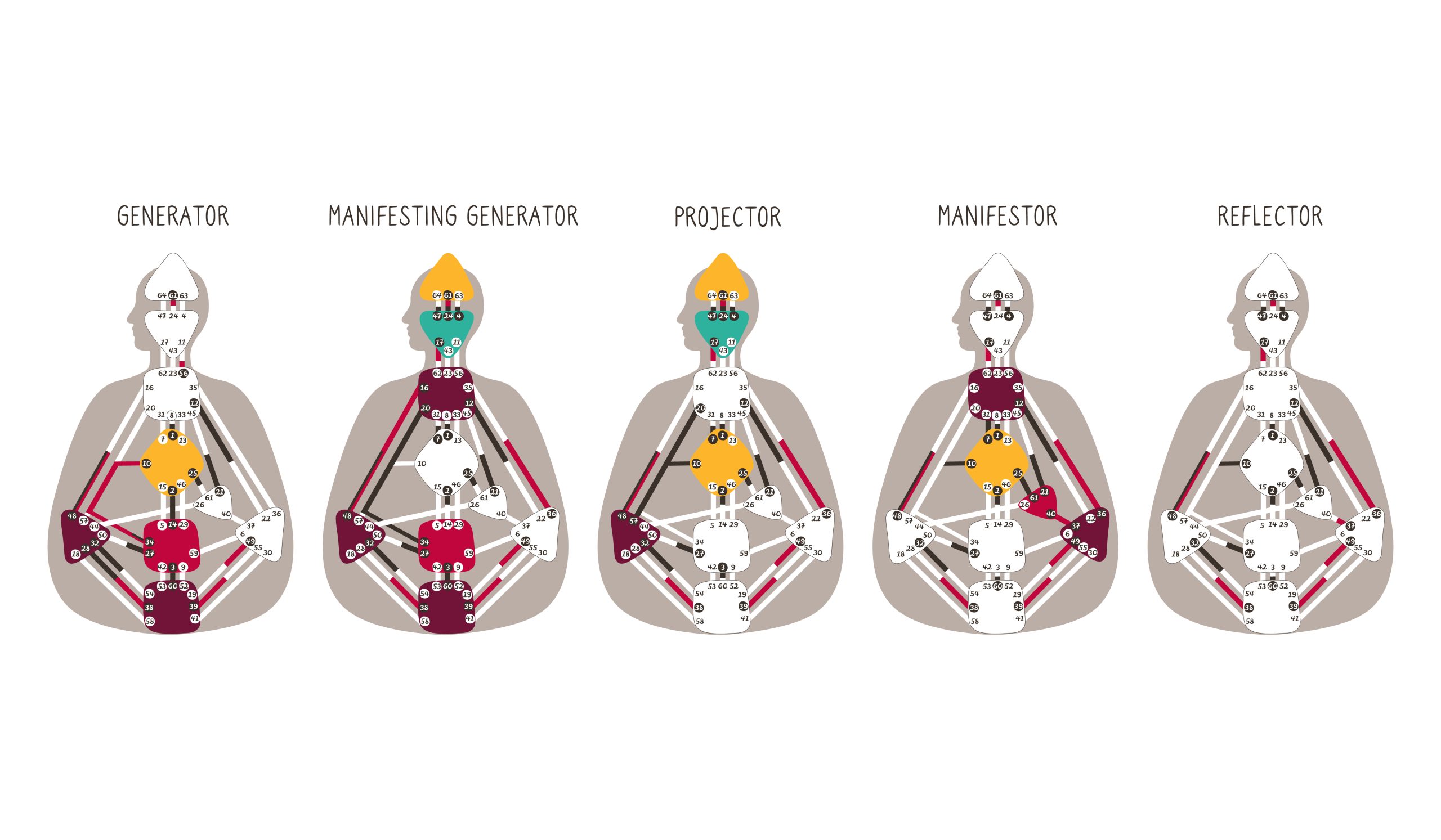 Human Design types classify people into four types, each with its characteristics, strategies, and purposes in life.
Human Design types classify people into four types, each with its characteristics, strategies, and purposes in life.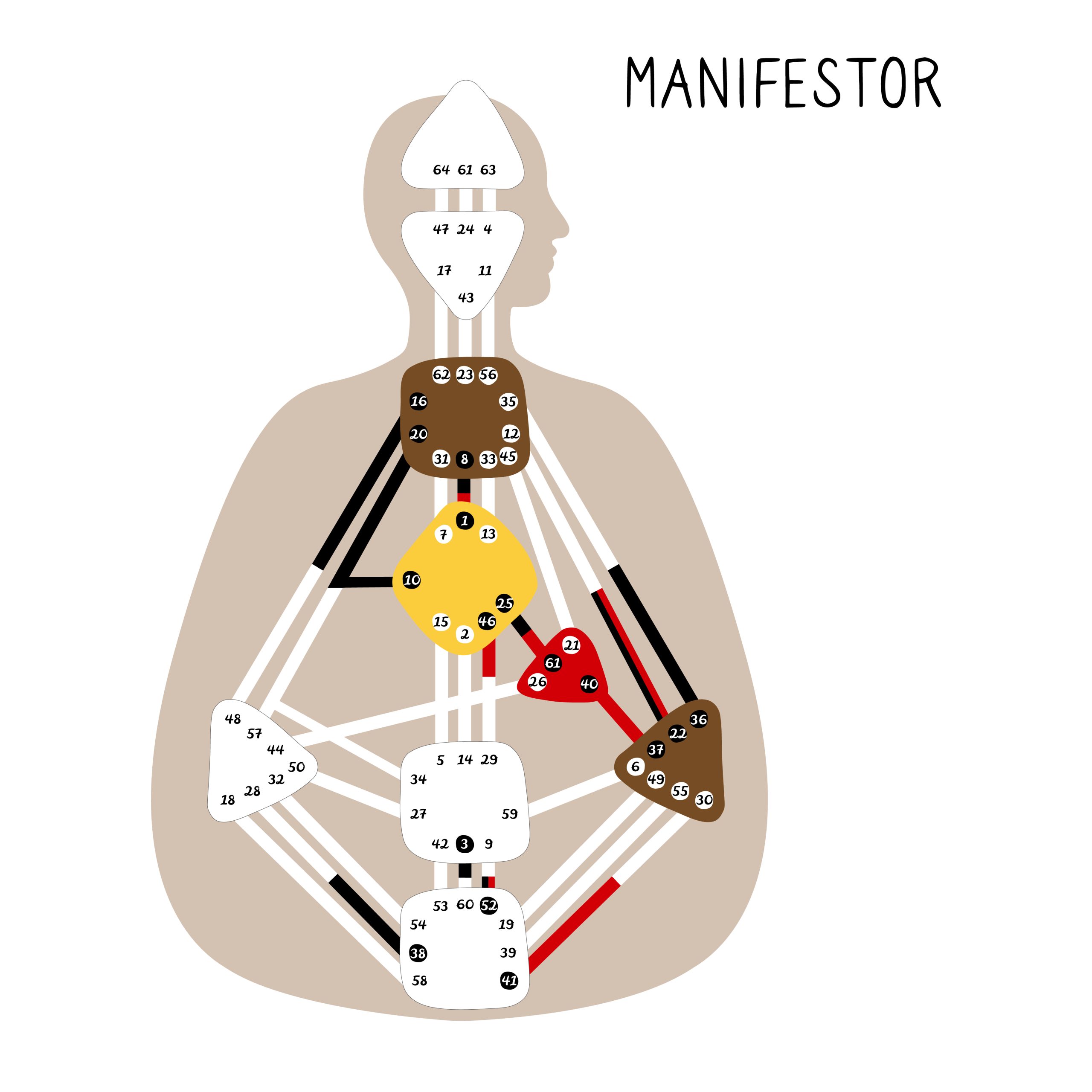 The manifestors are natural initiators full of the energy to make things happen. Manifestors are here to bring new ideas and concepts into the world and often have a strong urge to create and innovate. They
The manifestors are natural initiators full of the energy to make things happen. Manifestors are here to bring new ideas and concepts into the world and often have a strong urge to create and innovate. They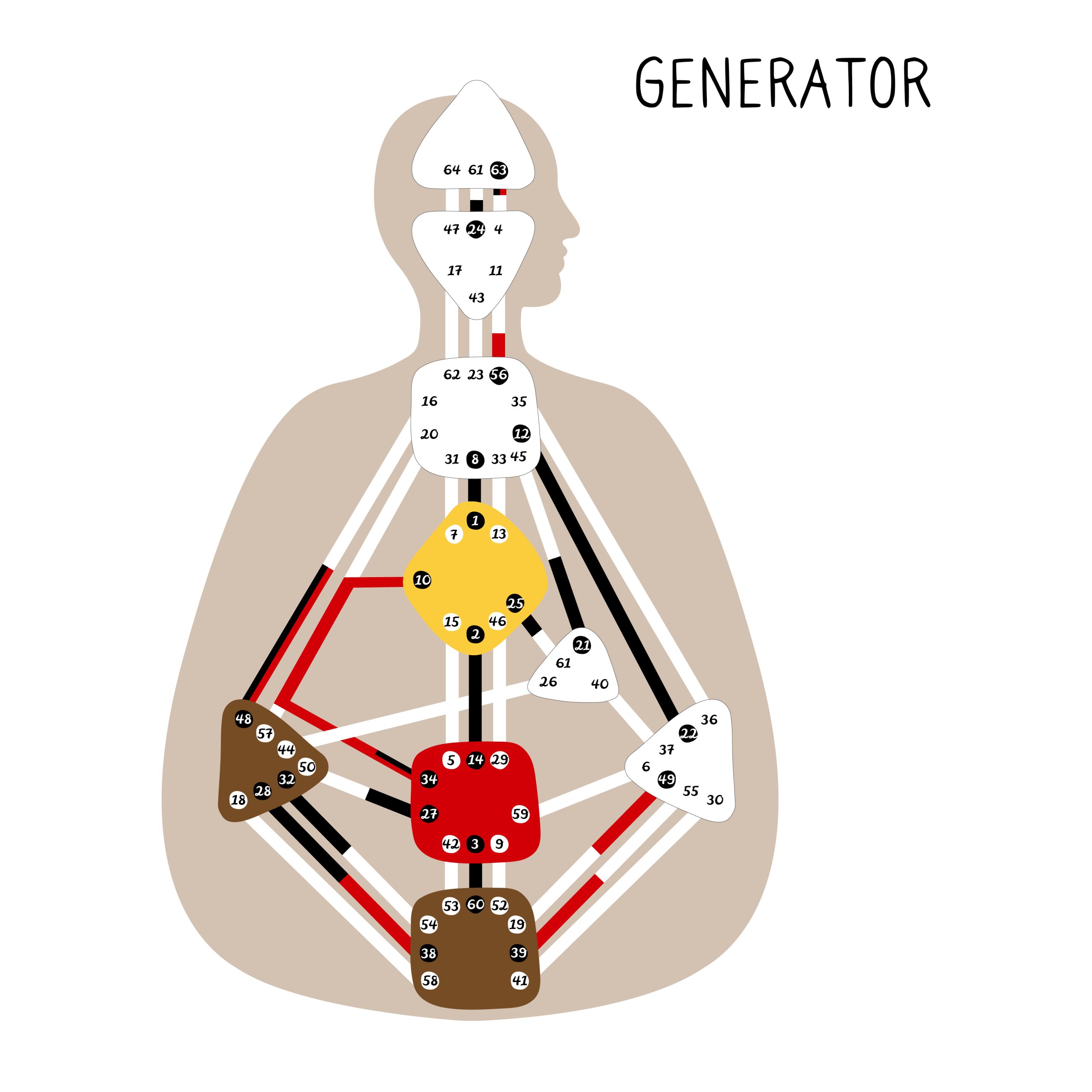 Generators comprise most of the population and possess a sustainable energy source that allows them to work on projects for extended periods. Generators are designed to respond to the world around them and follow their inner guidance to find work and activities that bring them joy and satisfaction.
Generators comprise most of the population and possess a sustainable energy source that allows them to work on projects for extended periods. Generators are designed to respond to the world around them and follow their inner guidance to find work and activities that bring them joy and satisfaction.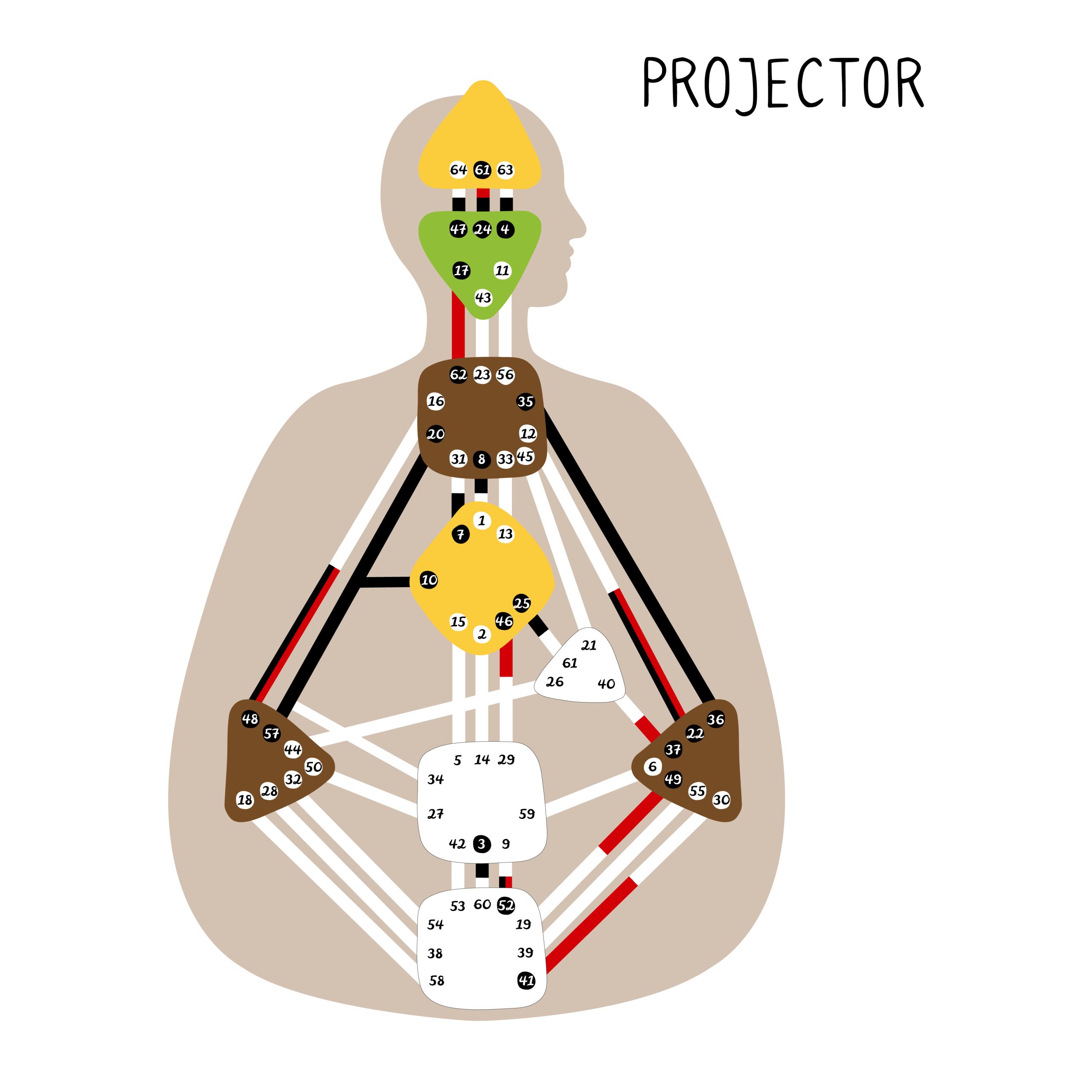 Projectors are natural guides and advisors with a talent for seeing the big picture and recognizing the potential in others.
Projectors are natural guides and advisors with a talent for seeing the big picture and recognizing the potential in others. 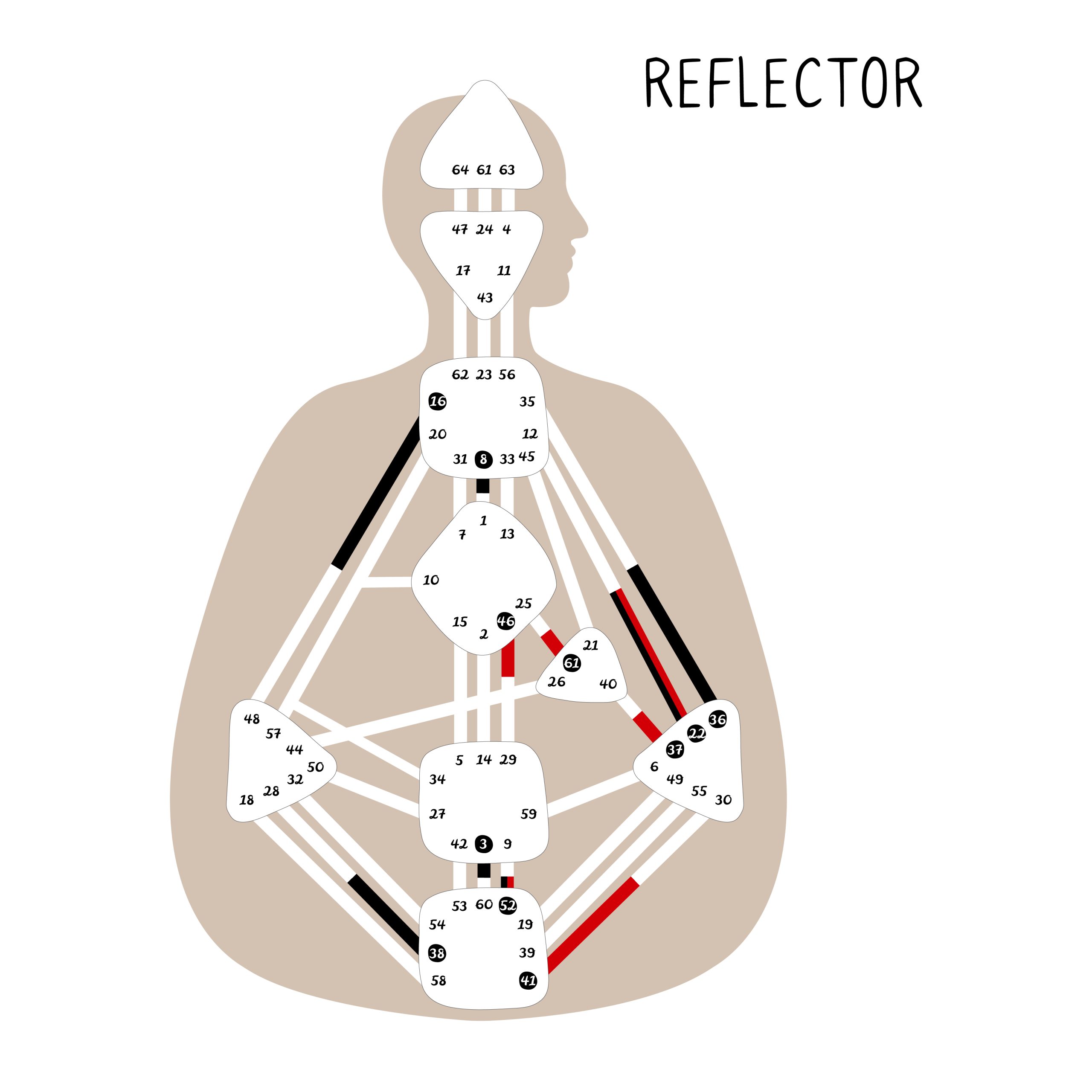 Reflectors are the rarest Human Design type comprising less than 1% of the population. They have a unique ability to reflect the energy of those around them and are highly sensitive to their environment.
Reflectors are the rarest Human Design type comprising less than 1% of the population. They have a unique ability to reflect the energy of those around them and are highly sensitive to their environment. 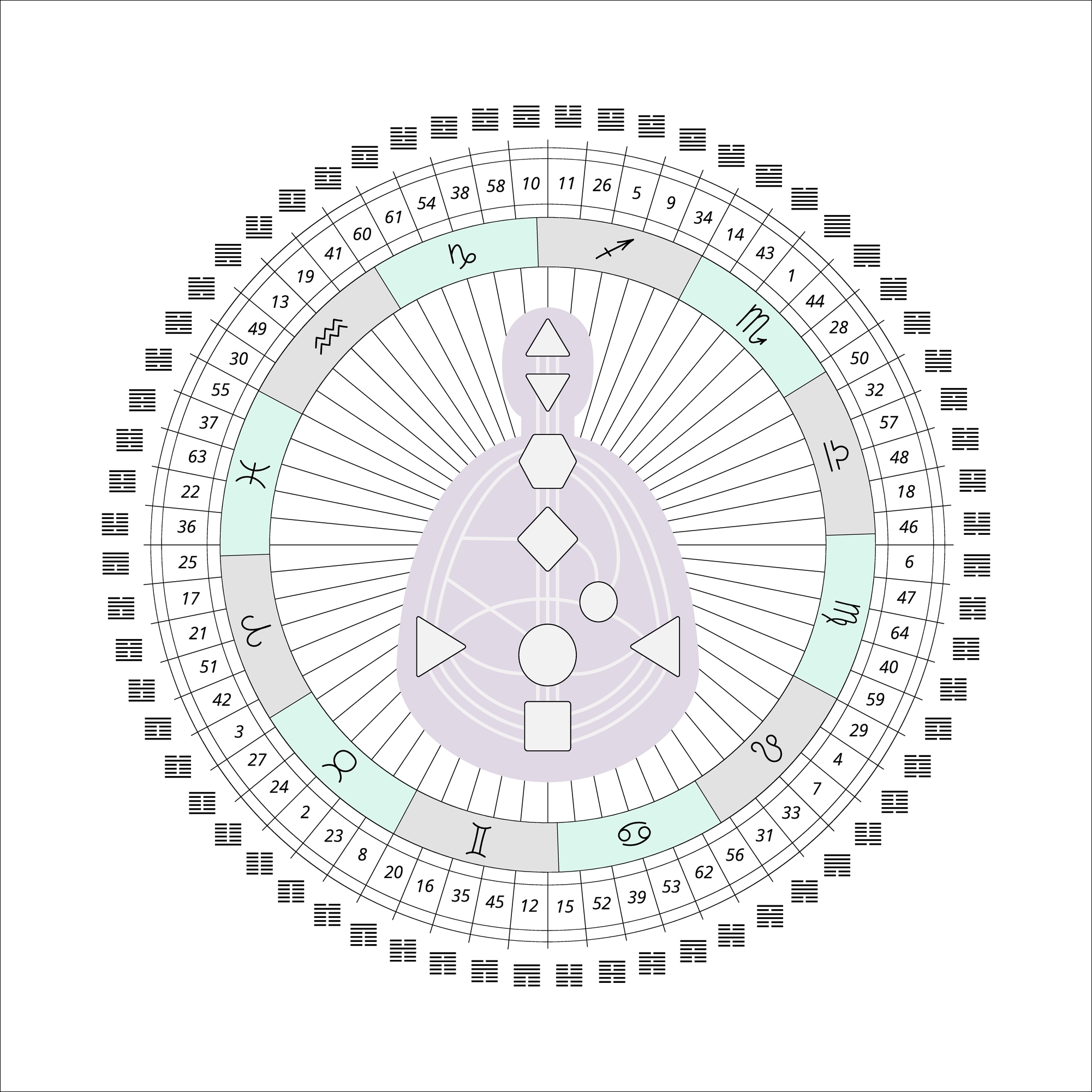 Human Design gates are like building blocks that make up your unique Human Design chart. There are 64 individual gates, each representing a specific energy frequency or trait.
Human Design gates are like building blocks that make up your unique Human Design chart. There are 64 individual gates, each representing a specific energy frequency or trait. 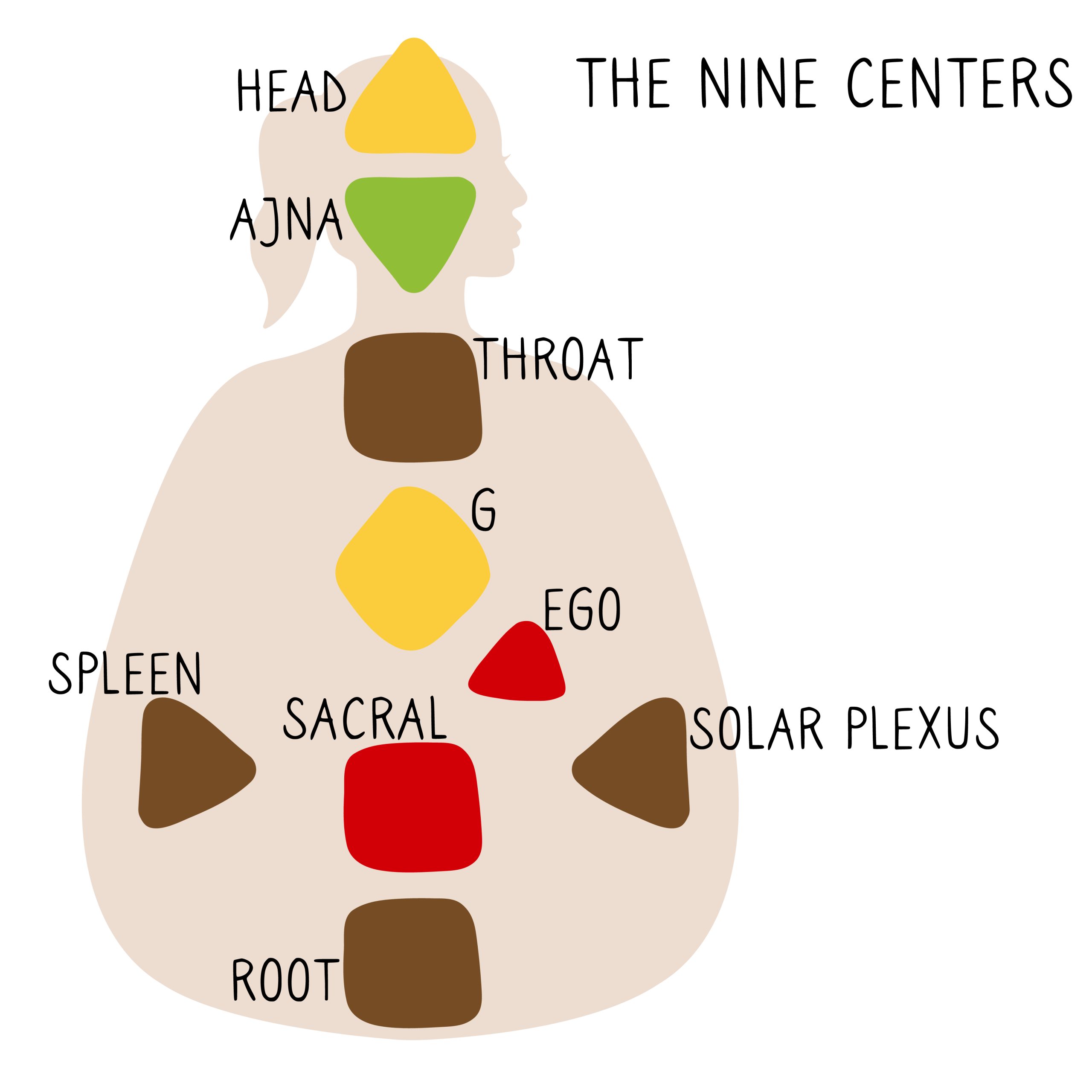 The Human Design channels are pathways that connect two or more centers on the Human Design chart. Each channel is made up of two gates that are connected by a line– together, they form a specific energy circuit. For example, Channel 34-20 connects the Spleen Center to the Throat Center and is associated with the energy of transformation and change.
The Human Design channels are pathways that connect two or more centers on the Human Design chart. Each channel is made up of two gates that are connected by a line– together, they form a specific energy circuit. For example, Channel 34-20 connects the Spleen Center to the Throat Center and is associated with the energy of transformation and change.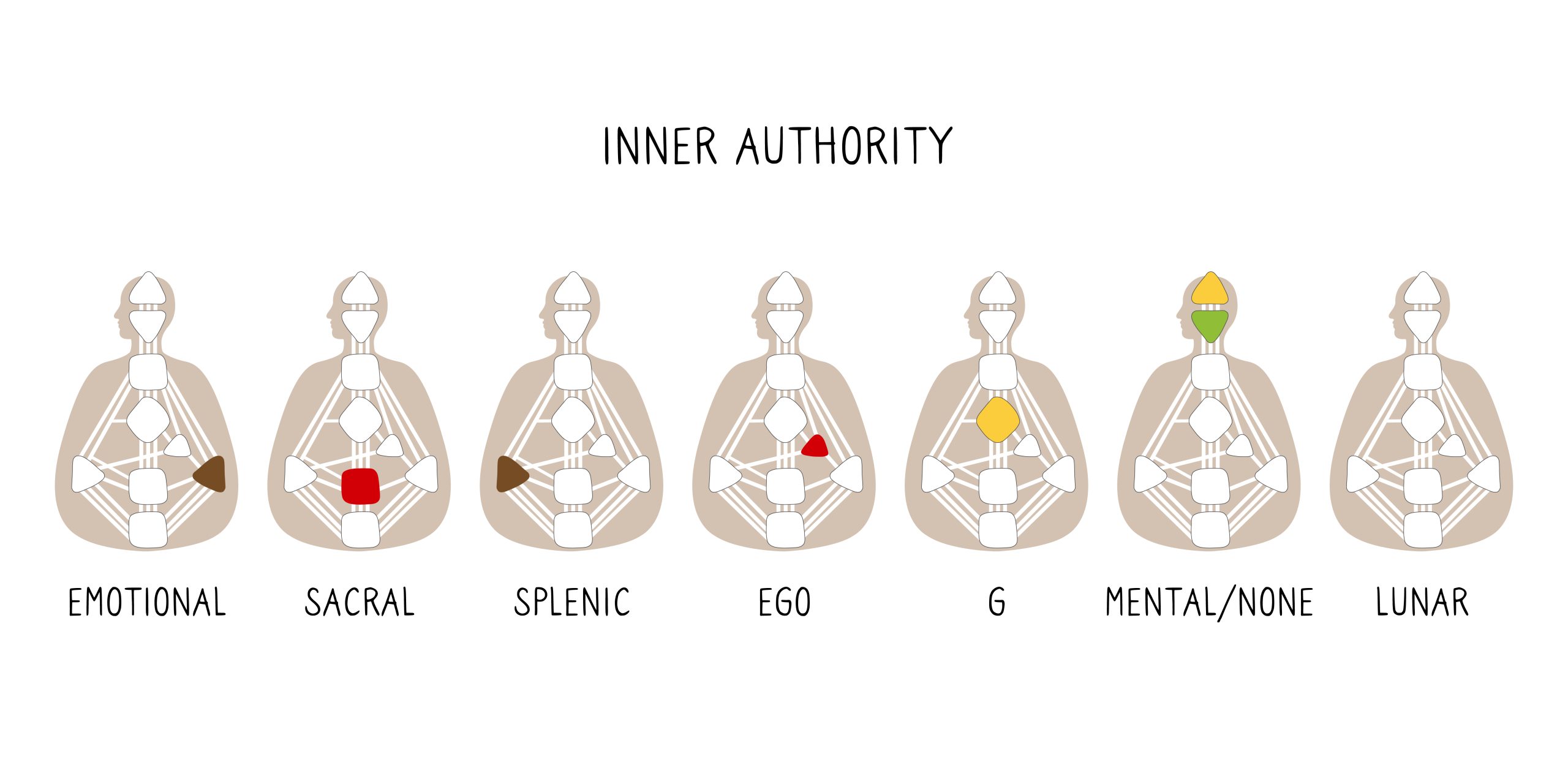
 Human Design and astrology are two systems used for understanding and interpreting human personality traits, tendencies, and life paths. While they share some similarities, they are distinct and have unique approaches.
Human Design and astrology are two systems used for understanding and interpreting human personality traits, tendencies, and life paths. While they share some similarities, they are distinct and have unique approaches.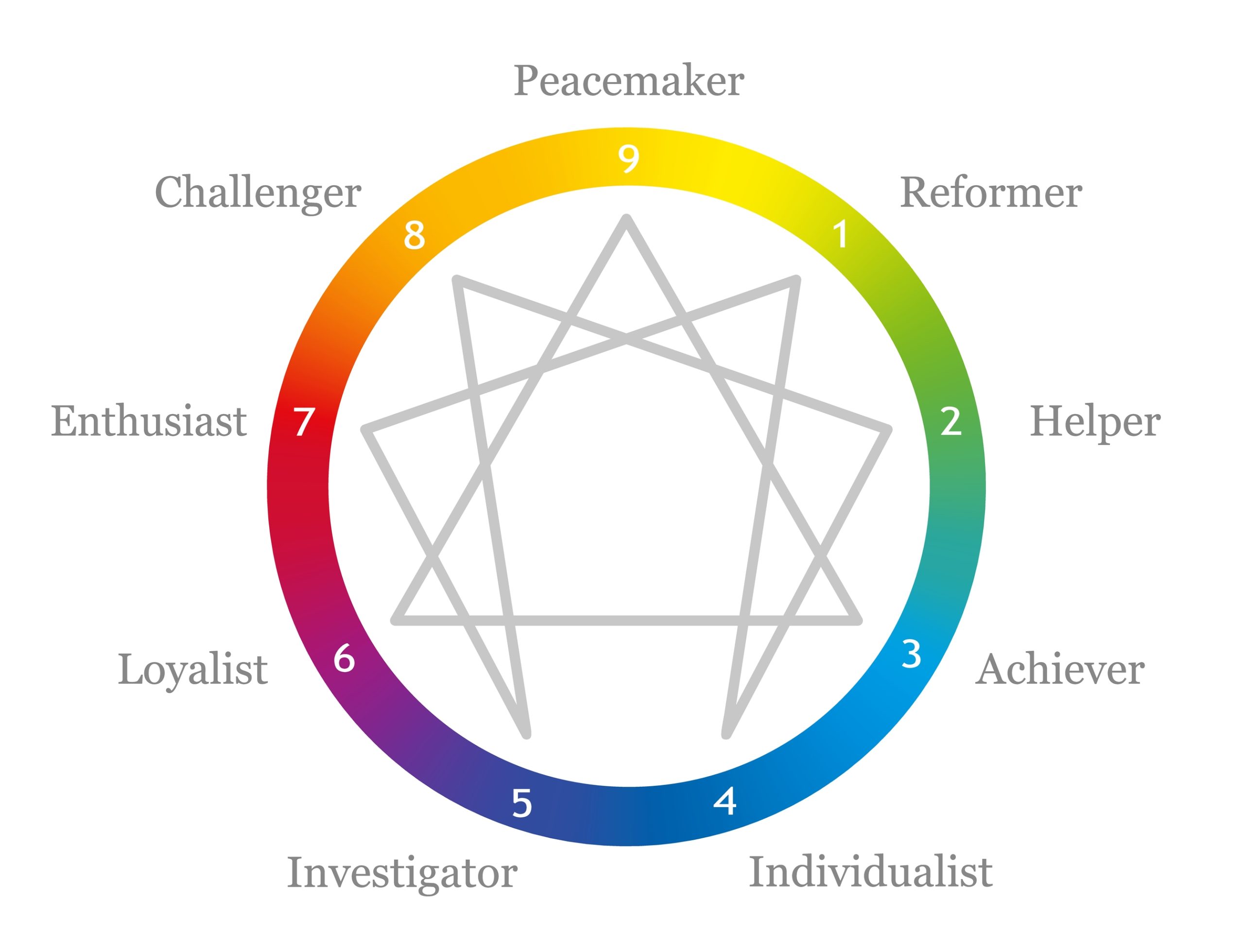 The Enneagram is based on the idea that each person has a dominant personality type but also has elements of other styles. It’s a system that categorizes people into nine personality types, each with motivations, fears, desires, and tendencies. You can use Enneagram’s knowledge to understand yourself and your relationships with others better.
The Enneagram is based on the idea that each person has a dominant personality type but also has elements of other styles. It’s a system that categorizes people into nine personality types, each with motivations, fears, desires, and tendencies. You can use Enneagram’s knowledge to understand yourself and your relationships with others better. 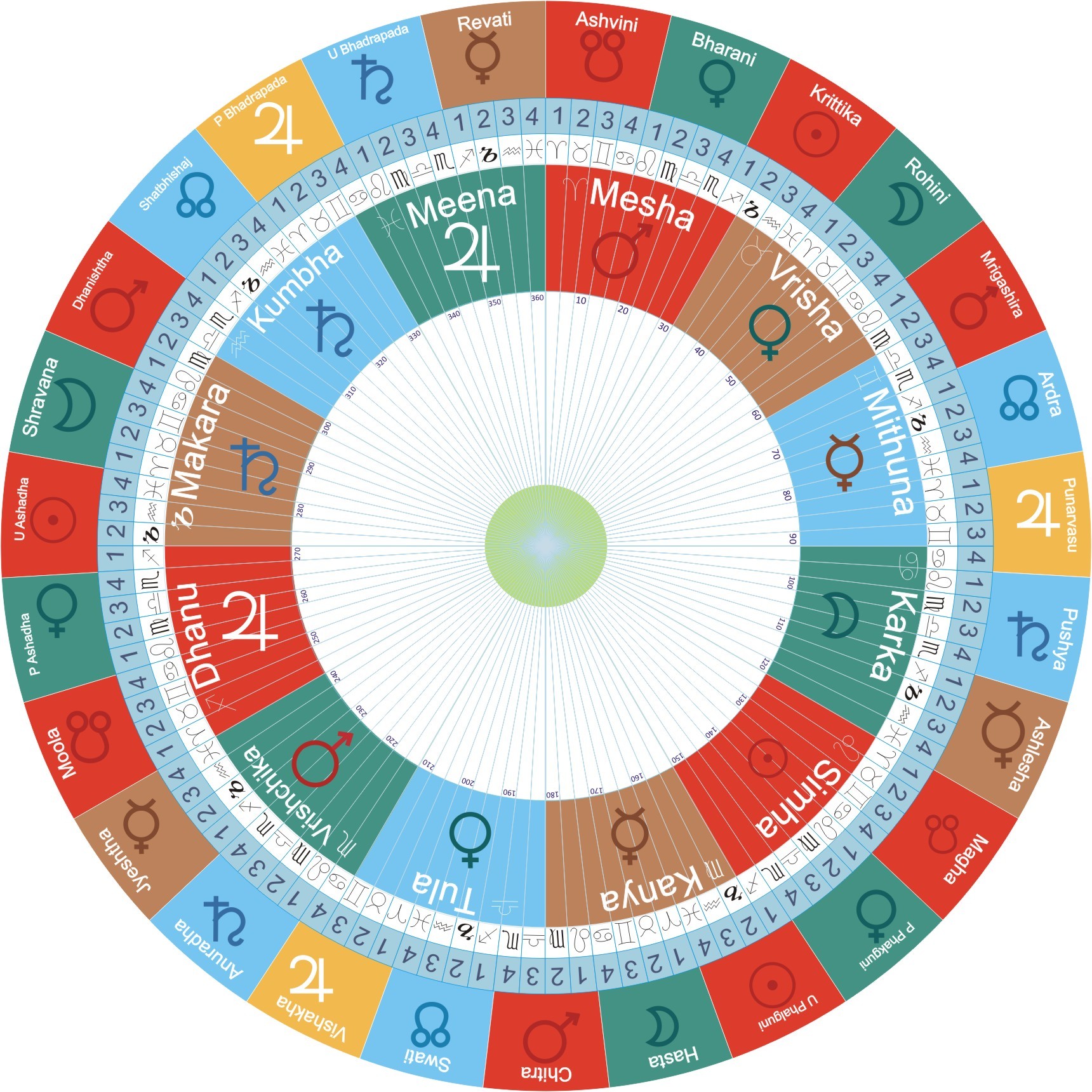 Vedic Astrology, also known as Jyotish, is a traditional Hindu system that uses a person’s birth data to analyze the positions of celestial bodies and their influence on humans. This system maps an individual’s destiny and guides everything from career choices to relationship compatibility.
Vedic Astrology, also known as Jyotish, is a traditional Hindu system that uses a person’s birth data to analyze the positions of celestial bodies and their influence on humans. This system maps an individual’s destiny and guides everything from career choices to relationship compatibility.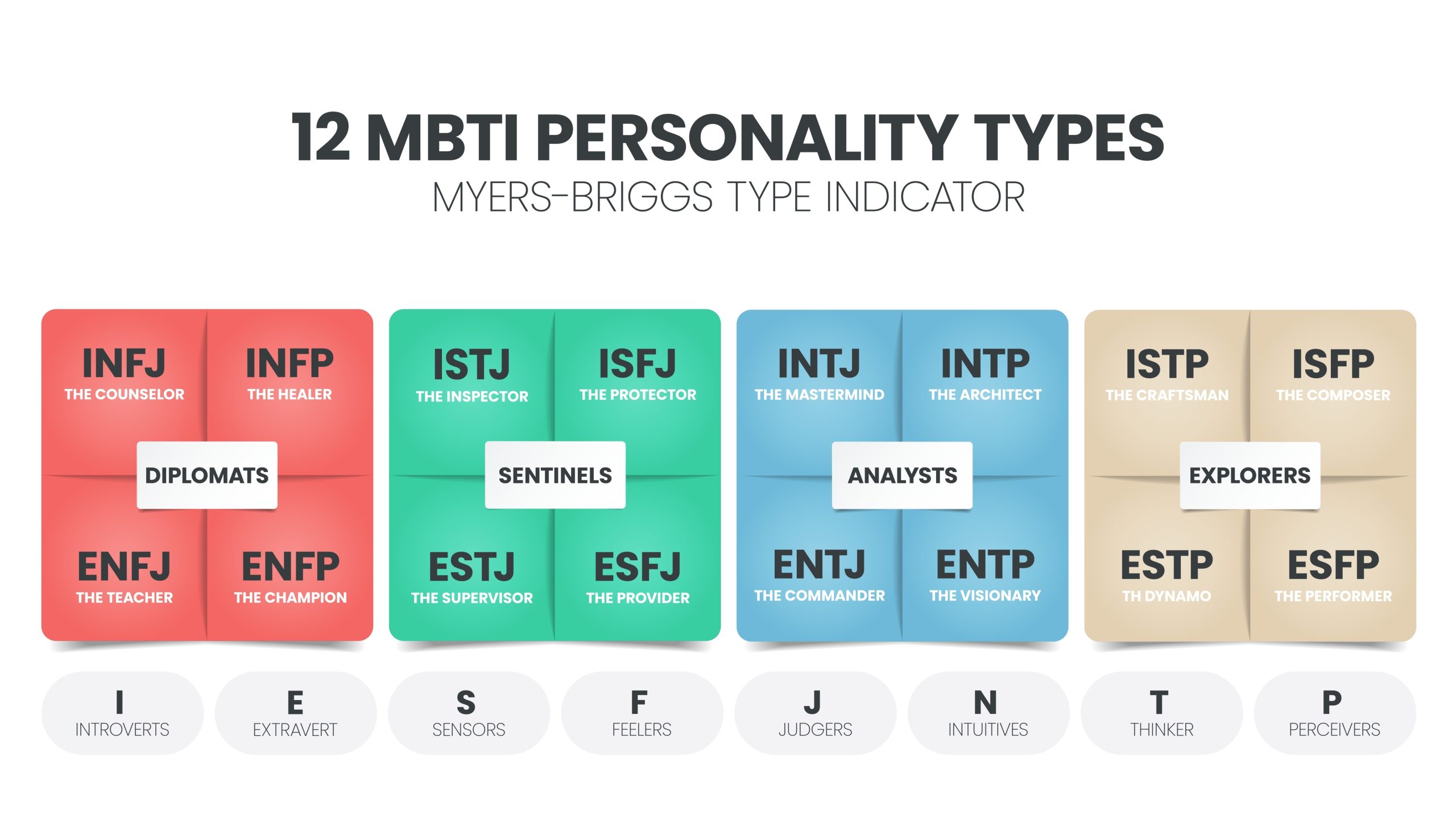 Unlike Human Design, which is rooted in a combination of scientific, spiritual, and esoteric teachings, the MBTI is based on the psychological theories of Carl Jung.
Unlike Human Design, which is rooted in a combination of scientific, spiritual, and esoteric teachings, the MBTI is based on the psychological theories of Carl Jung.  Kabbalah is a mystical tradition that originated in Judaism, and it provides a framework for understanding the nature of God, the cosmos, and the human soul.
Kabbalah is a mystical tradition that originated in Judaism, and it provides a framework for understanding the nature of God, the cosmos, and the human soul.
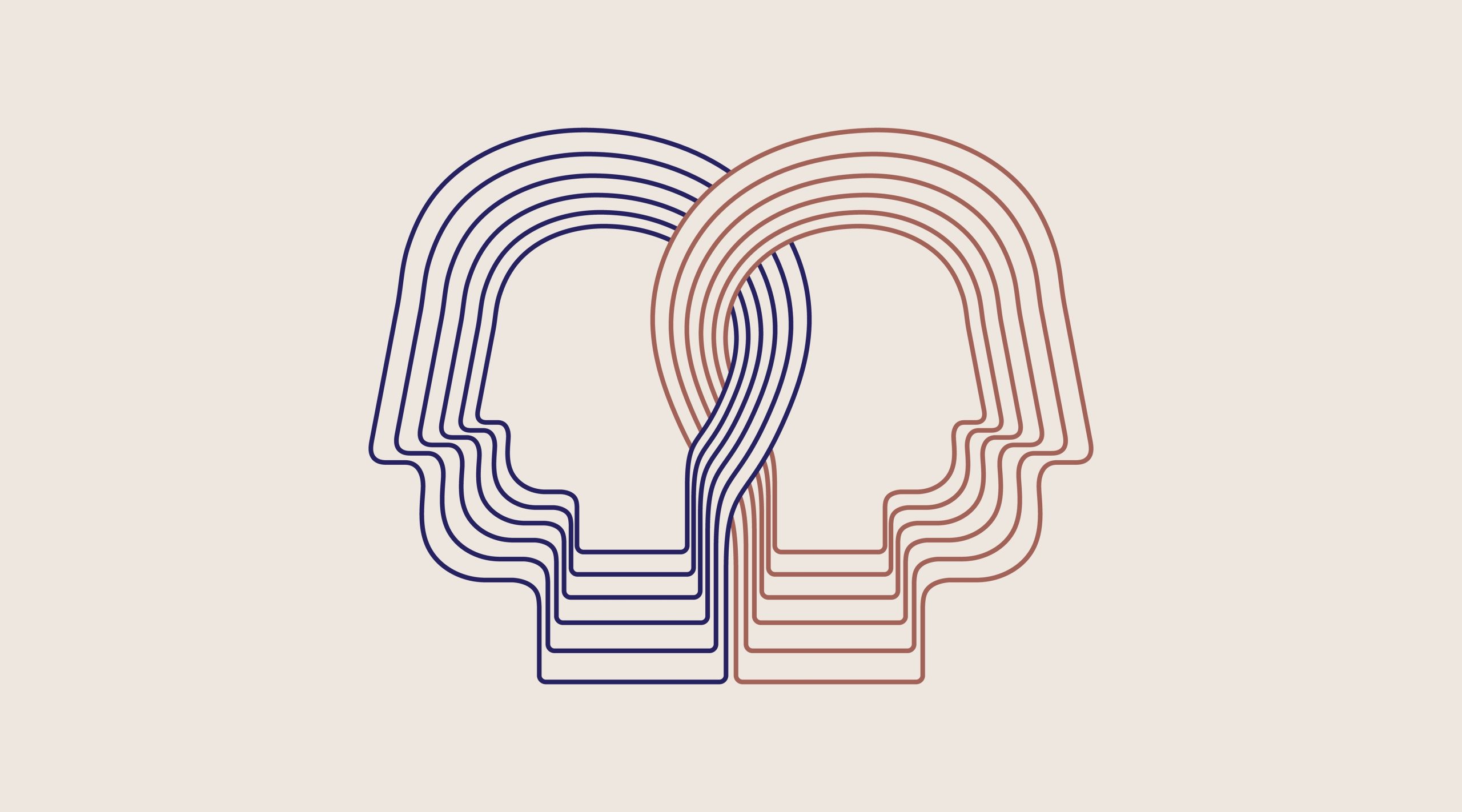 Understanding your Human Design can also impact your relationships. For instance, suppose you have an open Heart Center, indicating you are highly empathic and sensitive to others’ emotions. You may find that setting healthy boundaries and communicating your needs is essential for maintaining healthy relationships.
Understanding your Human Design can also impact your relationships. For instance, suppose you have an open Heart Center, indicating you are highly empathic and sensitive to others’ emotions. You may find that setting healthy boundaries and communicating your needs is essential for maintaining healthy relationships.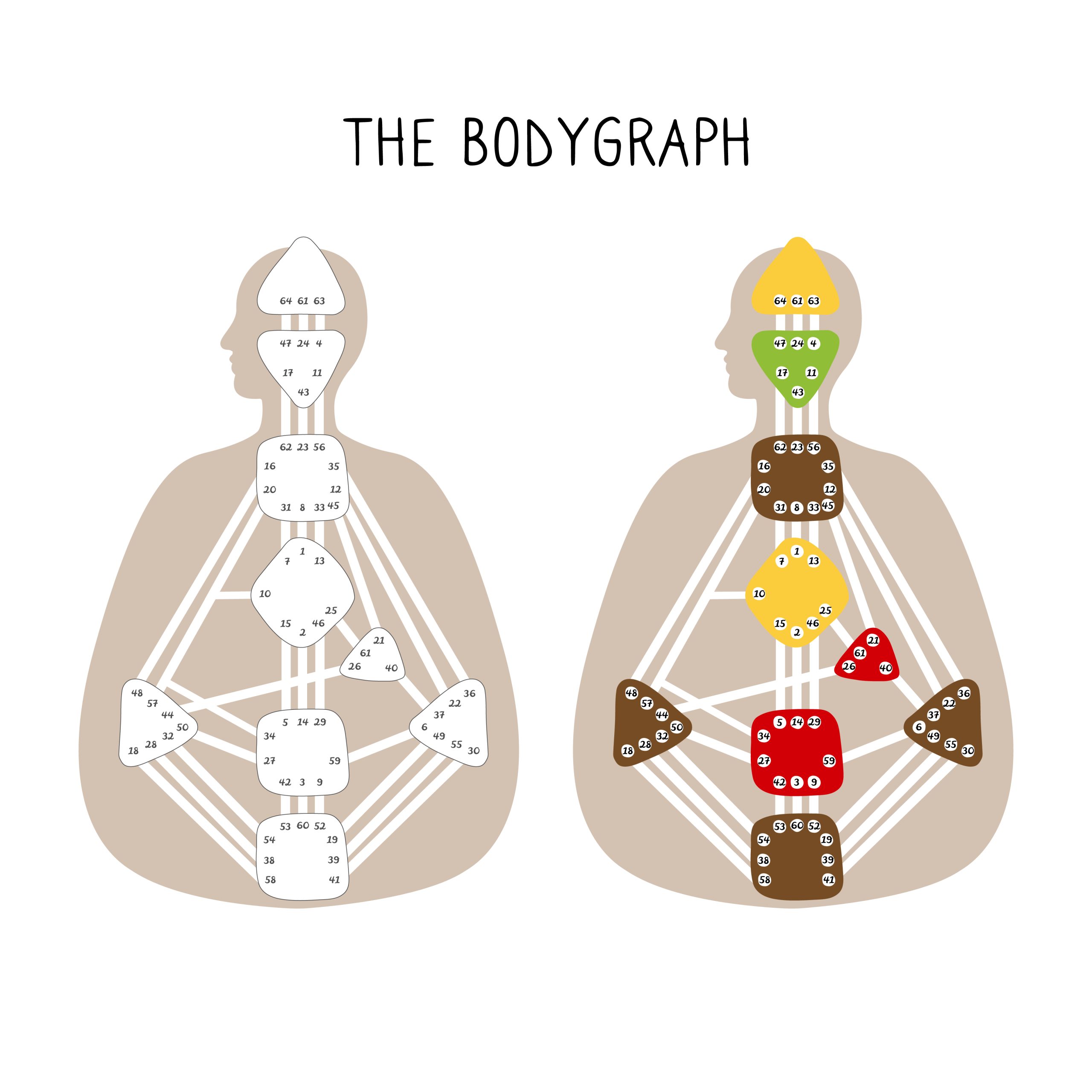 Human Design also provides insight into emotional dynamics between people. It’s valuable in helping us process and express emotions. Each Human Design type has its unique emotional energy and processing style, which can influence how we interact with others.
Human Design also provides insight into emotional dynamics between people. It’s valuable in helping us process and express emotions. Each Human Design type has its unique emotional energy and processing style, which can influence how we interact with others.  Human Design can be a powerful tool for business leaders and entrepreneurs, helping them determine strengths, tendencies, and potential challenges.
Human Design can be a powerful tool for business leaders and entrepreneurs, helping them determine strengths, tendencies, and potential challenges. 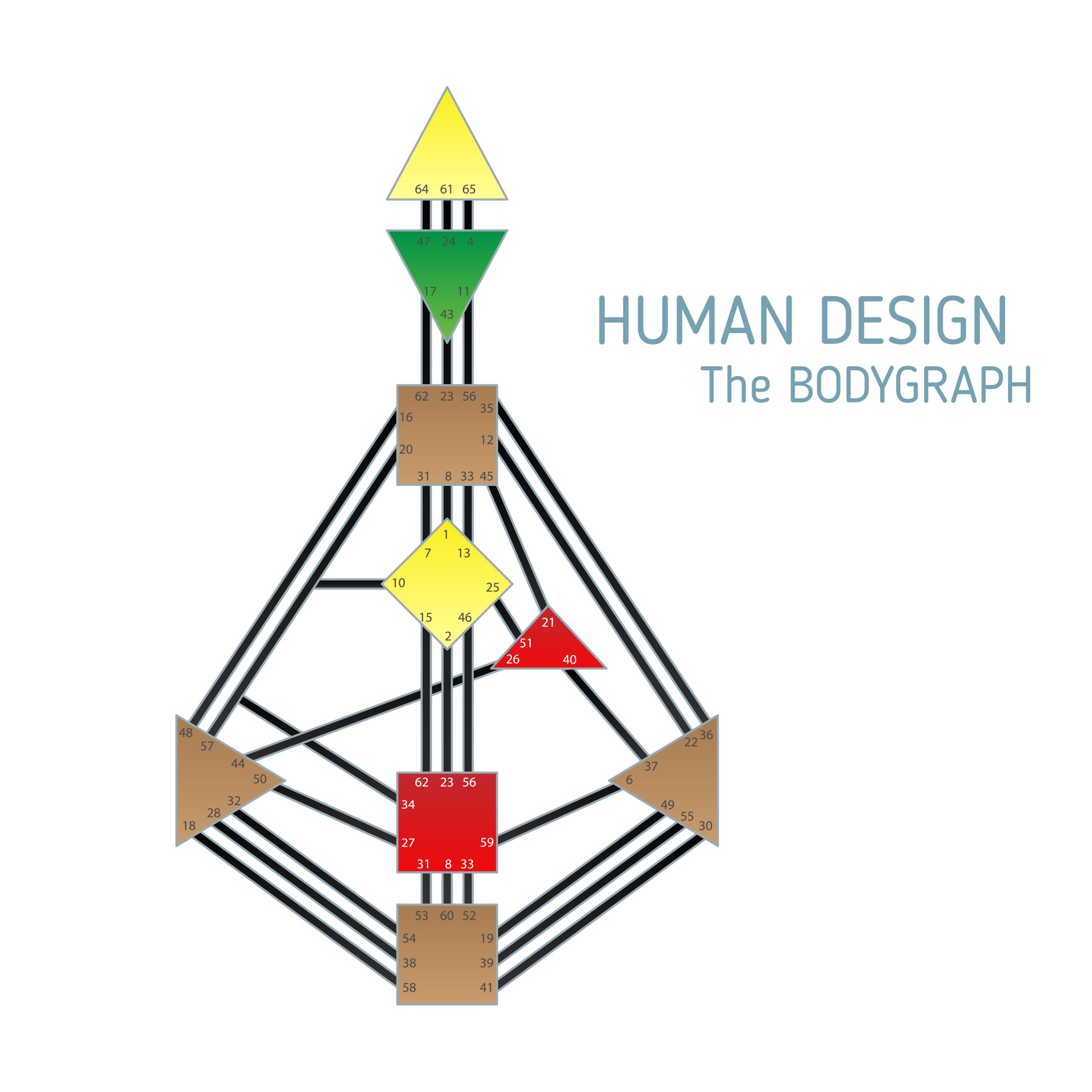 Human Design is very insightful regarding a person’s strengths and potential challenges, allowing them to create a personal and professional strategy that aligns with their true nature, purpose, and career aspirations.
Human Design is very insightful regarding a person’s strengths and potential challenges, allowing them to create a personal and professional strategy that aligns with their true nature, purpose, and career aspirations.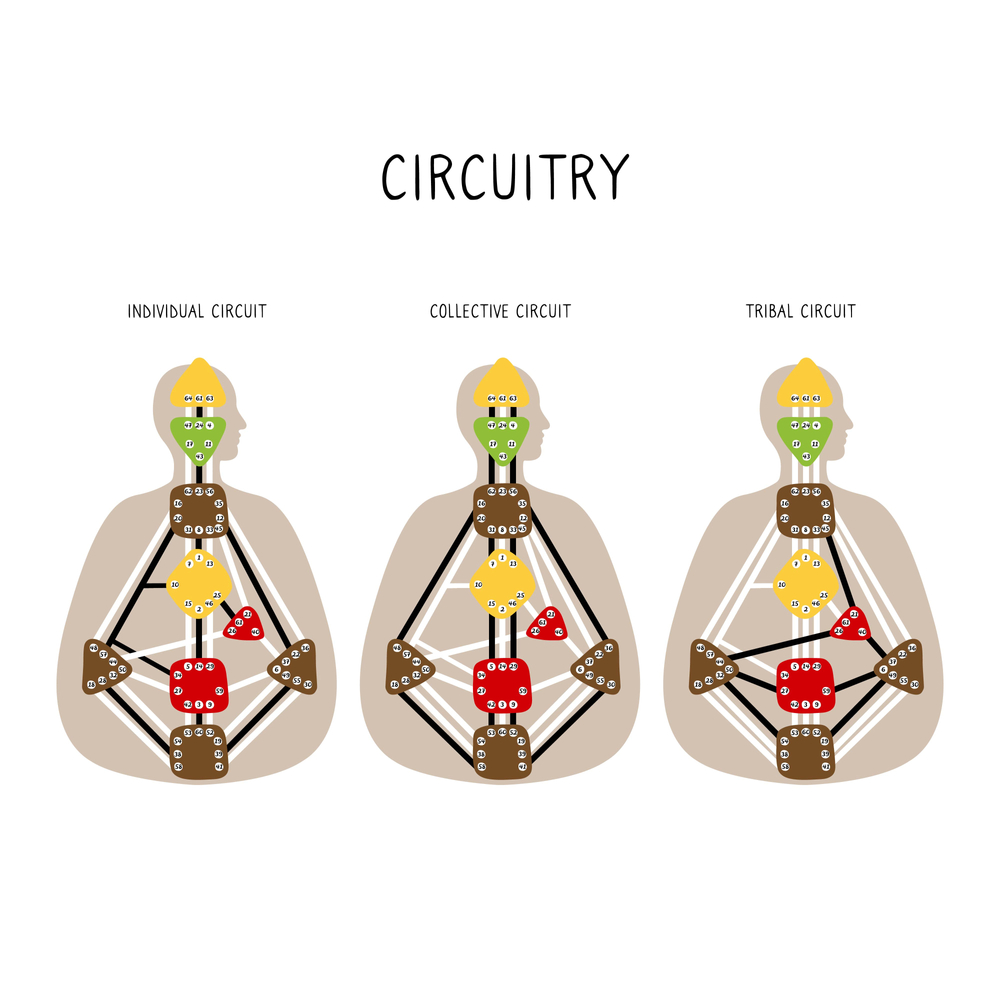 If you need help learning more about your strength and talents in terms of wealth creation–Human Design might be the thing. Knowing your unique traits allows you to identify opportunities for wealth creation that align with your true nature and purpose.
If you need help learning more about your strength and talents in terms of wealth creation–Human Design might be the thing. Knowing your unique traits allows you to identify opportunities for wealth creation that align with your true nature and purpose.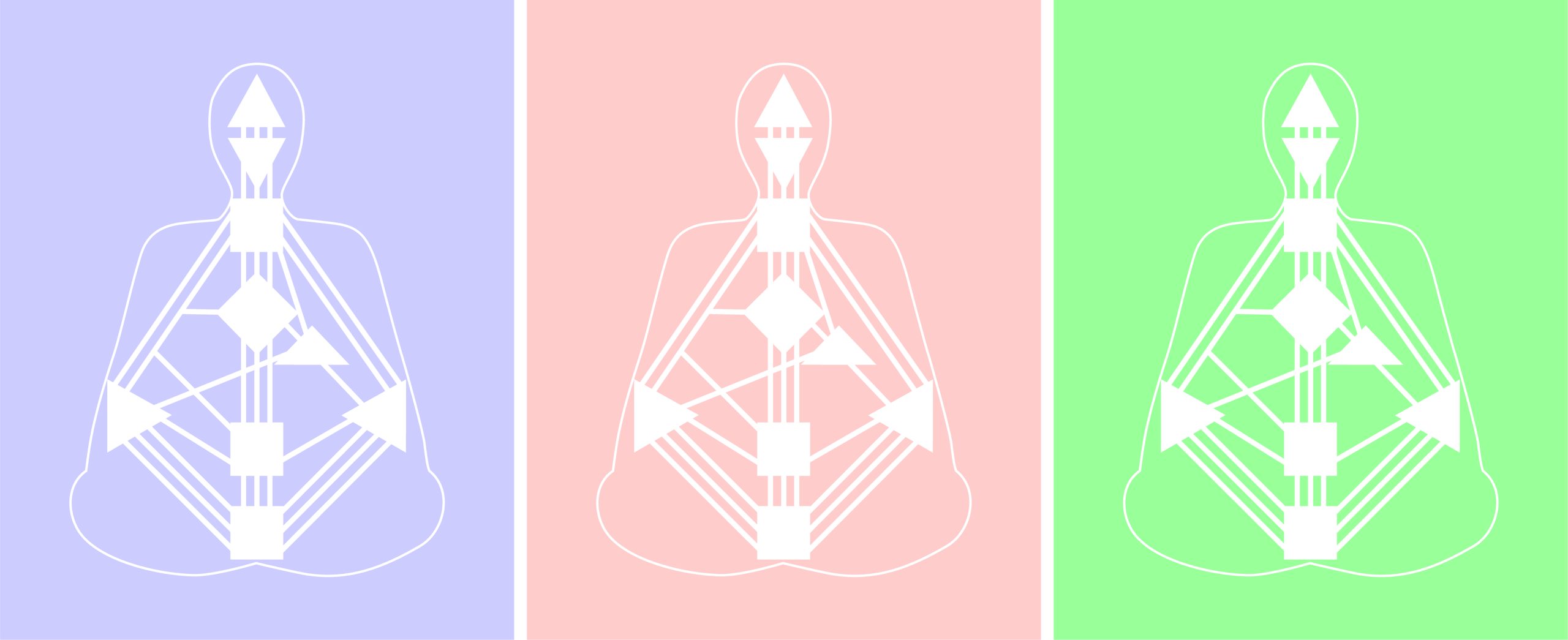
 Human Design can offer valuable insights into your energetic makeup and life path. Still, as with any philosophy of life, it can create skepticism and hesitation in people to fully embrace it.
Human Design can offer valuable insights into your energetic makeup and life path. Still, as with any philosophy of life, it can create skepticism and hesitation in people to fully embrace it. Human Design is a holistic practice that offers valuable insights into a person’s energetic makeup, life path, and purpose. It’s a unique system that combines various spiritual, scientific, and esoteric teachings and offers a detailed blueprint of everyone’s strengths, weaknesses, and natural tendencies.
Human Design is a holistic practice that offers valuable insights into a person’s energetic makeup, life path, and purpose. It’s a unique system that combines various spiritual, scientific, and esoteric teachings and offers a detailed blueprint of everyone’s strengths, weaknesses, and natural tendencies.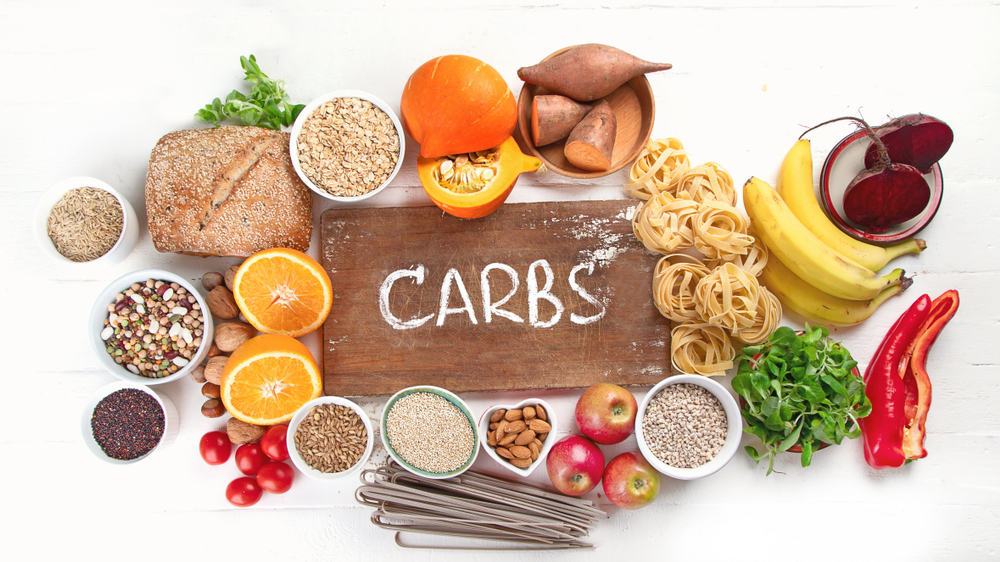 Carbohydrates are the primary source of energy, fueling the central nervous system, heart muscle, kidneys, and brain. They also help regulate blood sugar levels, boost serotonin production, aid digestion, and promote heart health.
Carbohydrates are the primary source of energy, fueling the central nervous system, heart muscle, kidneys, and brain. They also help regulate blood sugar levels, boost serotonin production, aid digestion, and promote heart health. 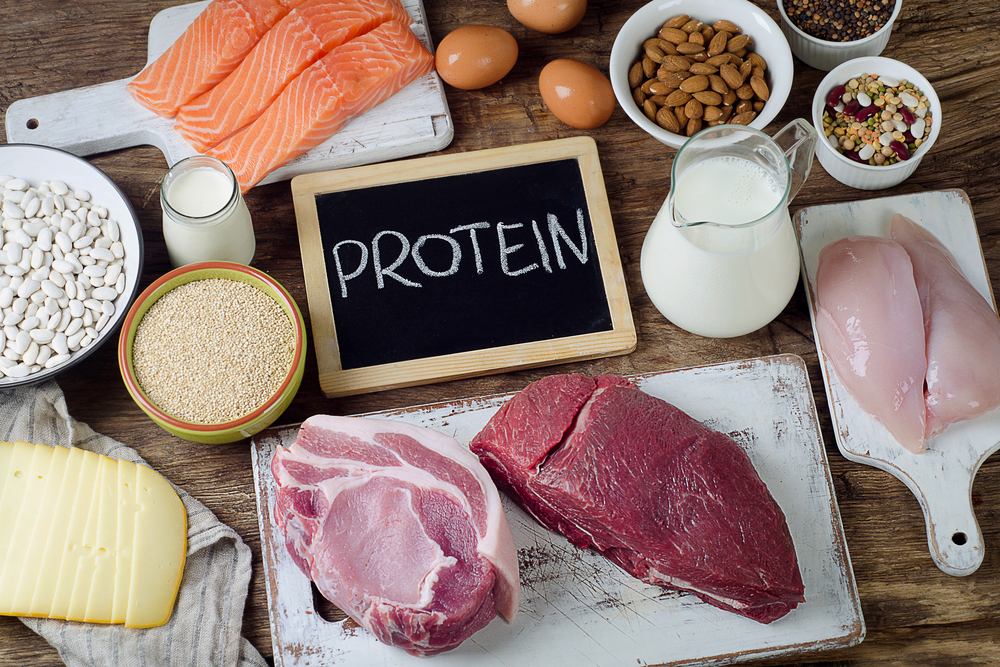 Protein is an essential macronutrient for everyone, at every life stage, not just bodybuilders and athletes. It is made of amino acids which aid the synthesis of key hormones such as glucagon, insulin, and thyroid hormones. These, in turn, regulate metabolism, internal temperature, energy levels, and body weight.
Protein is an essential macronutrient for everyone, at every life stage, not just bodybuilders and athletes. It is made of amino acids which aid the synthesis of key hormones such as glucagon, insulin, and thyroid hormones. These, in turn, regulate metabolism, internal temperature, energy levels, and body weight. 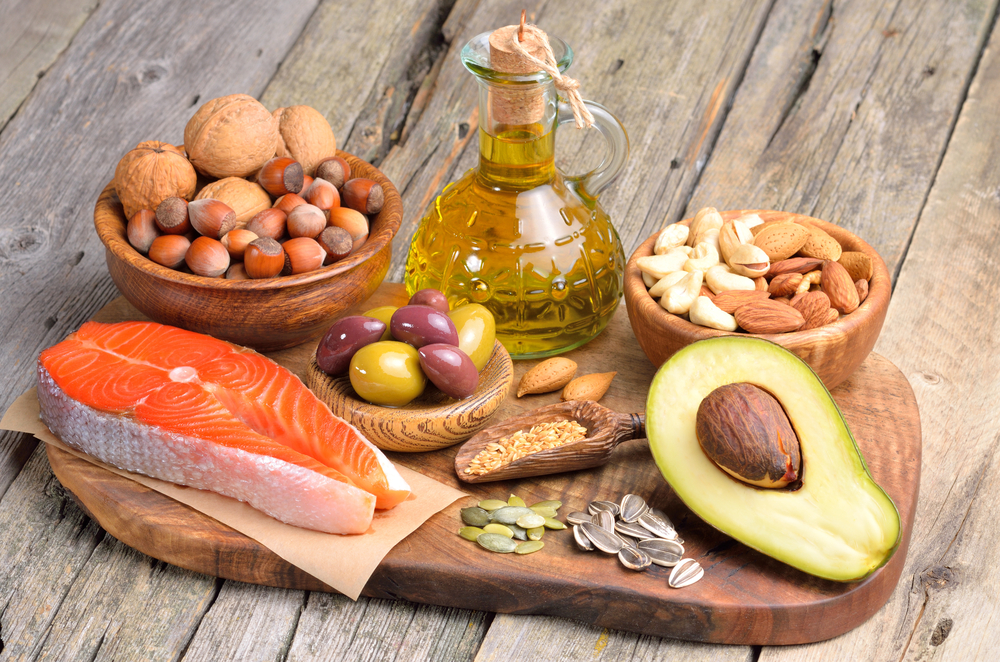 As different foods contain different combinations of amino acids, it is important to consume a variety of protein sources, including plant- and animal-based. Also called complete, animal-based proteins supply amino acids in sufficient quantities. They are found in a variety of foods, including dairy, eggs, poultry, fish, and meat. Plant-based sources include grains, seeds, nuts, lentils, and beans. They are called incomplete because they may lack certain amino acids.
As different foods contain different combinations of amino acids, it is important to consume a variety of protein sources, including plant- and animal-based. Also called complete, animal-based proteins supply amino acids in sufficient quantities. They are found in a variety of foods, including dairy, eggs, poultry, fish, and meat. Plant-based sources include grains, seeds, nuts, lentils, and beans. They are called incomplete because they may lack certain amino acids. 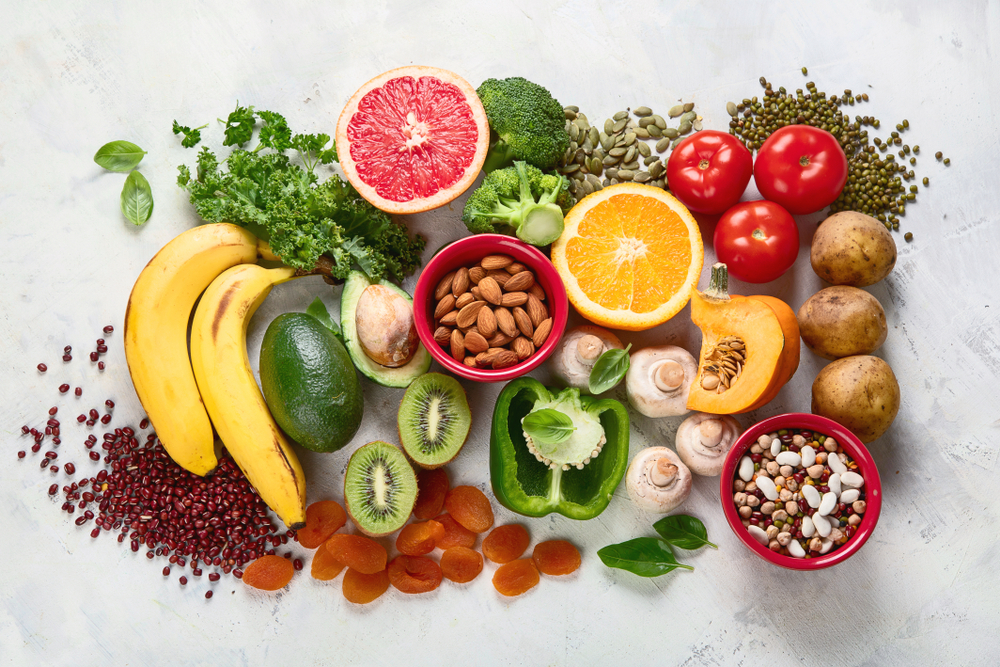 Consuming healthy facts is essential for several reasons, including nutrient absorption, hormone production, and brain health. Fats enable the body to absorb essential micronutrients such as vitamins K, E, D, and A which play a role in many processes, including coagulation, immune function, and bone and vision health.
Consuming healthy facts is essential for several reasons, including nutrient absorption, hormone production, and brain health. Fats enable the body to absorb essential micronutrients such as vitamins K, E, D, and A which play a role in many processes, including coagulation, immune function, and bone and vision health.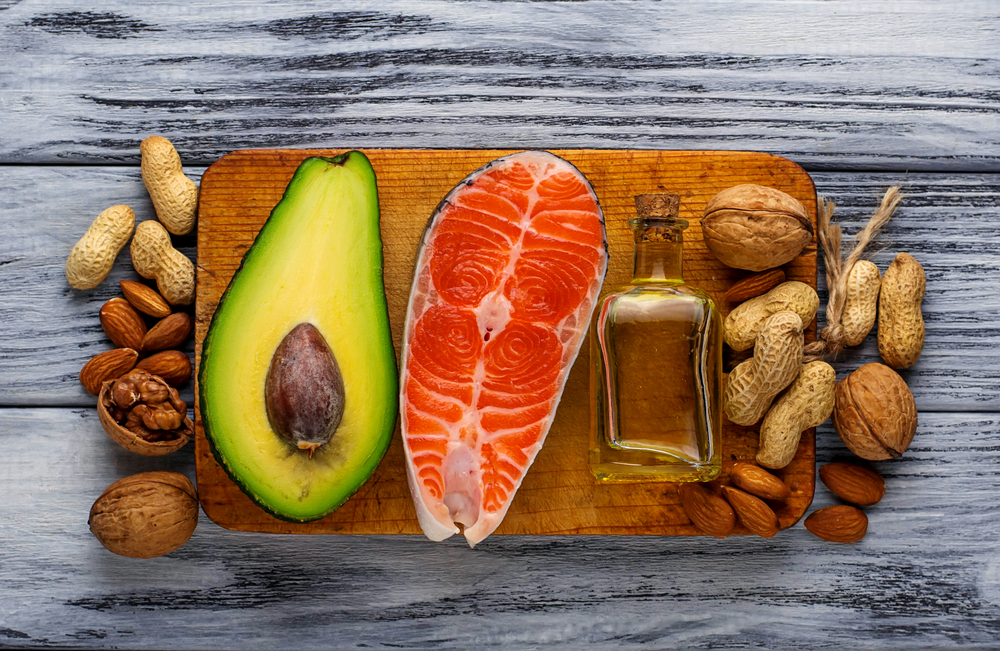 First, postmenopausal women are at risk of decline in cognitive function, including domains such as verbal and working memory, processing speed, and attention. Consuming foods that are high in healthy fat, such as nuts and fatty fish supports brain health and helps prevent cognitive decline.
First, postmenopausal women are at risk of decline in cognitive function, including domains such as verbal and working memory, processing speed, and attention. Consuming foods that are high in healthy fat, such as nuts and fatty fish supports brain health and helps prevent cognitive decline. As you get older, losing weight becomes more challenging. Hormonal changes, slower metabolism, decreased activity levels, and stress can contribute to weight gain. With a healthy diet and regular exercise, however, women can still achieve their weight and fitness goals and improve their overall weight.
As you get older, losing weight becomes more challenging. Hormonal changes, slower metabolism, decreased activity levels, and stress can contribute to weight gain. With a healthy diet and regular exercise, however, women can still achieve their weight and fitness goals and improve their overall weight.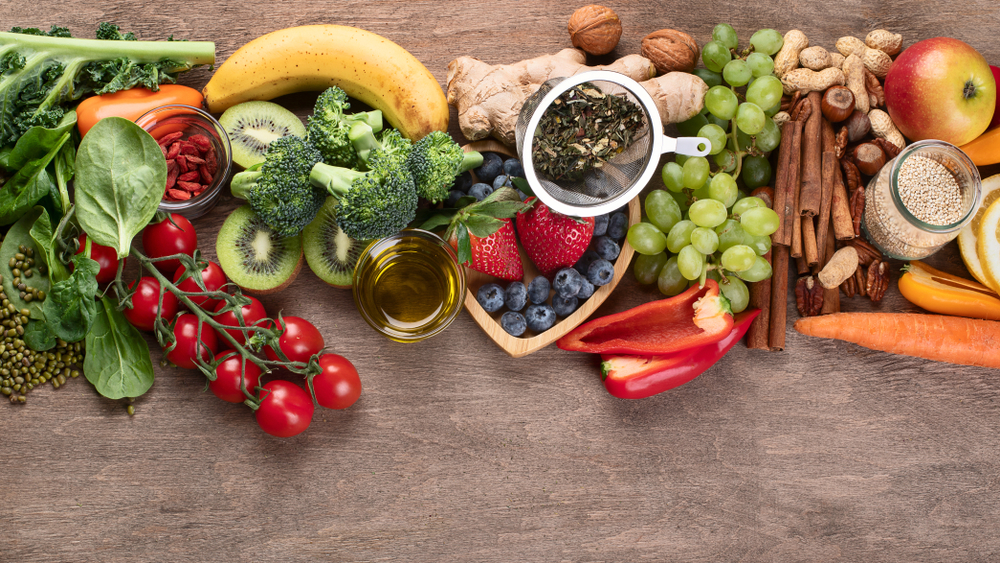 One of the main ways in which counting macros can aid your weight loss efforts is by helping you understand how the
One of the main ways in which counting macros can aid your weight loss efforts is by helping you understand how the  Consuming sufficient amounts of carbs, fat, and protein also supports hormonal balance as all three macronutrients participate in the production and regulation of hormones. As hormones play a key role in regulating appetite, metabolism, and body fat distribution, tracking and balancing macronutrients can help with weight loss. It also ensures that your body gets antioxidants, vitamins, and minerals which help maintain hormonal balance.
Consuming sufficient amounts of carbs, fat, and protein also supports hormonal balance as all three macronutrients participate in the production and regulation of hormones. As hormones play a key role in regulating appetite, metabolism, and body fat distribution, tracking and balancing macronutrients can help with weight loss. It also ensures that your body gets antioxidants, vitamins, and minerals which help maintain hormonal balance. In addition to your ideal macronutrient breakdown, you also need to figure out how many calories you need. To do this, multiply your weight (kg) by 10, and your height (cm) by 6.25, add both numbers and subtract your age X 5 and 161. If you weigh 75 kg, are 1.65 cm, and are 54 years old, the equation will look like this:
In addition to your ideal macronutrient breakdown, you also need to figure out how many calories you need. To do this, multiply your weight (kg) by 10, and your height (cm) by 6.25, add both numbers and subtract your age X 5 and 161. If you weigh 75 kg, are 1.65 cm, and are 54 years old, the equation will look like this: 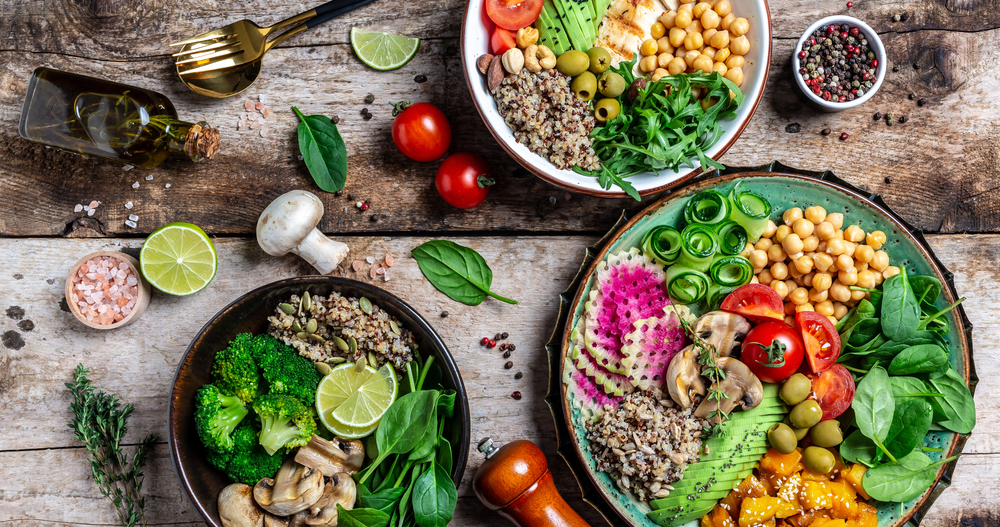 Consuming the right balance of macronutrients ensures that you’re meeting your nutritional needs by following a varied and balanced diet. And whether your goal is to improve your overall health, boost your energy, build muscle, or lose weight, counting your macros can be an effective and valuable strategy.
Consuming the right balance of macronutrients ensures that you’re meeting your nutritional needs by following a varied and balanced diet. And whether your goal is to improve your overall health, boost your energy, build muscle, or lose weight, counting your macros can be an effective and valuable strategy.  Developed by the
Developed by the Here’s a step-by-step guide to incorporating this activity into your life
Here’s a step-by-step guide to incorporating this activity into your life
 To fully immerse in nature and embrace the experience, disconnect from all of your gadgets, including smartphones, headphones, and tablets. The constant messages, alerts, and notifications can be a source of distraction that keeps you engaged. This can make it difficult to stay present, appreciate the scents, sounds, and sights of nature, and fully immerse in the experience.
To fully immerse in nature and embrace the experience, disconnect from all of your gadgets, including smartphones, headphones, and tablets. The constant messages, alerts, and notifications can be a source of distraction that keeps you engaged. This can make it difficult to stay present, appreciate the scents, sounds, and sights of nature, and fully immerse in the experience. 
 Keep your eyes open and observe your surroundings. Avoid thinking about deadlines or emails and stay mindful and present. You will be surprised by the variety of plants and wildlife that you see while engaging in mindful observation. Allow yourself to fully immerse, pay attention to nature’s small details, feel the soil and leaves, and smell the sweet, woodsy scent of forest air. Let nature enter through your feet, hands, nose, eyes, and ears, wandering aimlessly and slowly. Let the forest in and savor nature’s bounty and serenity.
Keep your eyes open and observe your surroundings. Avoid thinking about deadlines or emails and stay mindful and present. You will be surprised by the variety of plants and wildlife that you see while engaging in mindful observation. Allow yourself to fully immerse, pay attention to nature’s small details, feel the soil and leaves, and smell the sweet, woodsy scent of forest air. Let nature enter through your feet, hands, nose, eyes, and ears, wandering aimlessly and slowly. Let the forest in and savor nature’s bounty and serenity.  Woods bathing has been shown to offer several benefits, including stress reduction.
Woods bathing has been shown to offer several benefits, including stress reduction. Walking in nature can help stimulate the production of serotonin, a chemical that regulates mood. At normal levels, serotonin promotes feelings of well-being, calm, and contentment, making you feel happier, emotionally stable, and more focused. Low levels of serotonin, on the other hand, increase the risk for a variety of mood disorders, including anxiety and depression.
Walking in nature can help stimulate the production of serotonin, a chemical that regulates mood. At normal levels, serotonin promotes feelings of well-being, calm, and contentment, making you feel happier, emotionally stable, and more focused. Low levels of serotonin, on the other hand, increase the risk for a variety of mood disorders, including anxiety and depression. When you spend time in a natural environment, you are removed from the stress, distractions, and noise of city life, freeing up more mental space for creative thinking. Immersing yourself in nature also exposes you to a variety of textures, smells, sounds, and sights which can be a source of inspiration and new ideas.
When you spend time in a natural environment, you are removed from the stress, distractions, and noise of city life, freeing up more mental space for creative thinking. Immersing yourself in nature also exposes you to a variety of textures, smells, sounds, and sights which can be a source of inspiration and new ideas. Spending mindful time in nature can help strengthen your immune system in several ways. First, spending time outdoors can help you get the sunshine and vitamin D you need. Vitamin D plays an important role in regulating specific immune cells as well as your overall immune function.
Spending mindful time in nature can help strengthen your immune system in several ways. First, spending time outdoors can help you get the sunshine and vitamin D you need. Vitamin D plays an important role in regulating specific immune cells as well as your overall immune function.  Several
Several While more research is needed to ascertain how spending time in nature aids recovery, the preliminary evidence is promising, suggesting that being in a natural environment accelerates recovery.
While more research is needed to ascertain how spending time in nature aids recovery, the preliminary evidence is promising, suggesting that being in a natural environment accelerates recovery.  With few crowds, towering trees, and a network of hiking trails, Humboldt Redwoods State Park is an excellent choice for practicing woods bathing. As the park is found in a remote rural location, it can offer quiet seclusion to connect with nature without distraction. There are plenty of secluded and quiet spots to immerse yourself in your surroundings, including Mattole Beach, Rockefeller Forest, Bull Creek Flats, and the Cuneo Creek Horse Camp. You will also find many trails where you can wander for hours away from crowds and noise. Trails that tend to have fewer visitors include the Drury-Chaney Loop, Founders Grove Nature, and Bull Creek Trails.
With few crowds, towering trees, and a network of hiking trails, Humboldt Redwoods State Park is an excellent choice for practicing woods bathing. As the park is found in a remote rural location, it can offer quiet seclusion to connect with nature without distraction. There are plenty of secluded and quiet spots to immerse yourself in your surroundings, including Mattole Beach, Rockefeller Forest, Bull Creek Flats, and the Cuneo Creek Horse Camp. You will also find many trails where you can wander for hours away from crowds and noise. Trails that tend to have fewer visitors include the Drury-Chaney Loop, Founders Grove Nature, and Bull Creek Trails.  A vast, pristine area in Southeast Alaska, the Tongass National Forest offers plenty of spots and opportunities for forest bathing. Some great spots include the Eagle Beach State Recreation Area, Admiralty Island National Monument, and Mendenhall Glacier. A beautiful and idyllic stretch of beach, the Eagle Beach State Recreation Area is a great place for beachcombing, sunbathing, and wildlife viewing. You will find several trails, like the Rainforest, Outer Point, and Eagle Beach Trails, offering plenty of opportunities for leisurely walks, relaxation, birdwatching, and more.
A vast, pristine area in Southeast Alaska, the Tongass National Forest offers plenty of spots and opportunities for forest bathing. Some great spots include the Eagle Beach State Recreation Area, Admiralty Island National Monument, and Mendenhall Glacier. A beautiful and idyllic stretch of beach, the Eagle Beach State Recreation Area is a great place for beachcombing, sunbathing, and wildlife viewing. You will find several trails, like the Rainforest, Outer Point, and Eagle Beach Trails, offering plenty of opportunities for leisurely walks, relaxation, birdwatching, and more. With picturesque waterfalls, stunning fall foliage, and an abundance of wildlife, Green Mountain National Forest offers a variety of trails and natural settings that promote a sense of serenity, calm, and relaxation. You can take Stratton Mountain or Deer Leap Trail to enjoy beautiful views of the valleys and the Adirondack or Green Mountains. While strolling along the trails, you will find plenty of opportunities and spots to practice relaxation and observe wildlife in a forest ablaze with violets, trillium, and asters.
With picturesque waterfalls, stunning fall foliage, and an abundance of wildlife, Green Mountain National Forest offers a variety of trails and natural settings that promote a sense of serenity, calm, and relaxation. You can take Stratton Mountain or Deer Leap Trail to enjoy beautiful views of the valleys and the Adirondack or Green Mountains. While strolling along the trails, you will find plenty of opportunities and spots to practice relaxation and observe wildlife in a forest ablaze with violets, trillium, and asters.  Great Smoky Mountains National Park is the home of a diverse ecosystem, towering rock formations, scenic valleys, beautiful meadows, and high peaks, offering stunning views and serene hiking experiences. The many trails you can take include Abrams Falls, Alum Cave, and Ramsey Cascades, among others, which provide ample opportunities for relaxation, wildlife viewing, camping, and picnicking. The area is known for its rich biodiversity, including more than 240 species of birds and 1,500 species of flowers, offering excellent opportunities to immerse yourself in the scents and sounds of nature.
Great Smoky Mountains National Park is the home of a diverse ecosystem, towering rock formations, scenic valleys, beautiful meadows, and high peaks, offering stunning views and serene hiking experiences. The many trails you can take include Abrams Falls, Alum Cave, and Ramsey Cascades, among others, which provide ample opportunities for relaxation, wildlife viewing, camping, and picnicking. The area is known for its rich biodiversity, including more than 240 species of birds and 1,500 species of flowers, offering excellent opportunities to immerse yourself in the scents and sounds of nature.  In search of holistic and natural ways to enhance their well-being, many people have discovered the benefits of spending mindful time in nature. Through meditation, yoga, creative expression, forest walks, and sensory awareness, forest bathing offers practitioners the opportunity to immerse themselves in their surroundings, deepen their connection with nature, and experience its healing power.
In search of holistic and natural ways to enhance their well-being, many people have discovered the benefits of spending mindful time in nature. Through meditation, yoga, creative expression, forest walks, and sensory awareness, forest bathing offers practitioners the opportunity to immerse themselves in their surroundings, deepen their connection with nature, and experience its healing power.
 Are women more prone to suffer from diastasis recti abdominis? Yes, women are more prone to suffer from diastasis recti abdominis than men, particularly during and after pregnancy. The condition affects about
Are women more prone to suffer from diastasis recti abdominis? Yes, women are more prone to suffer from diastasis recti abdominis than men, particularly during and after pregnancy. The condition affects about 
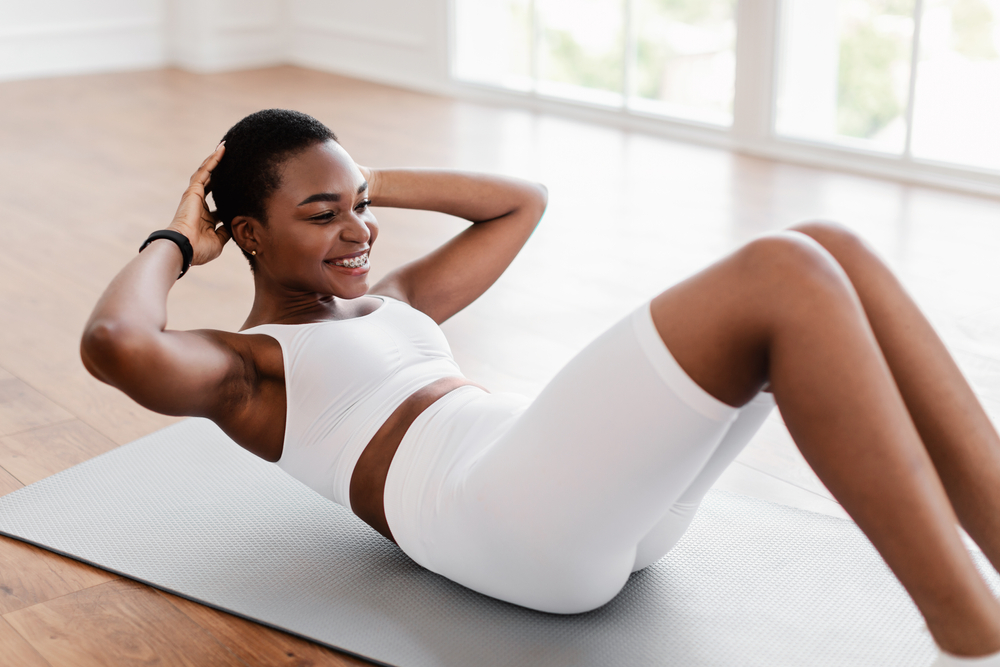 These routines will help you strengthen your abdominal muscles and if you do them consistently close the gap caused by diastasis recti.
These routines will help you strengthen your abdominal muscles and if you do them consistently close the gap caused by diastasis recti. 
